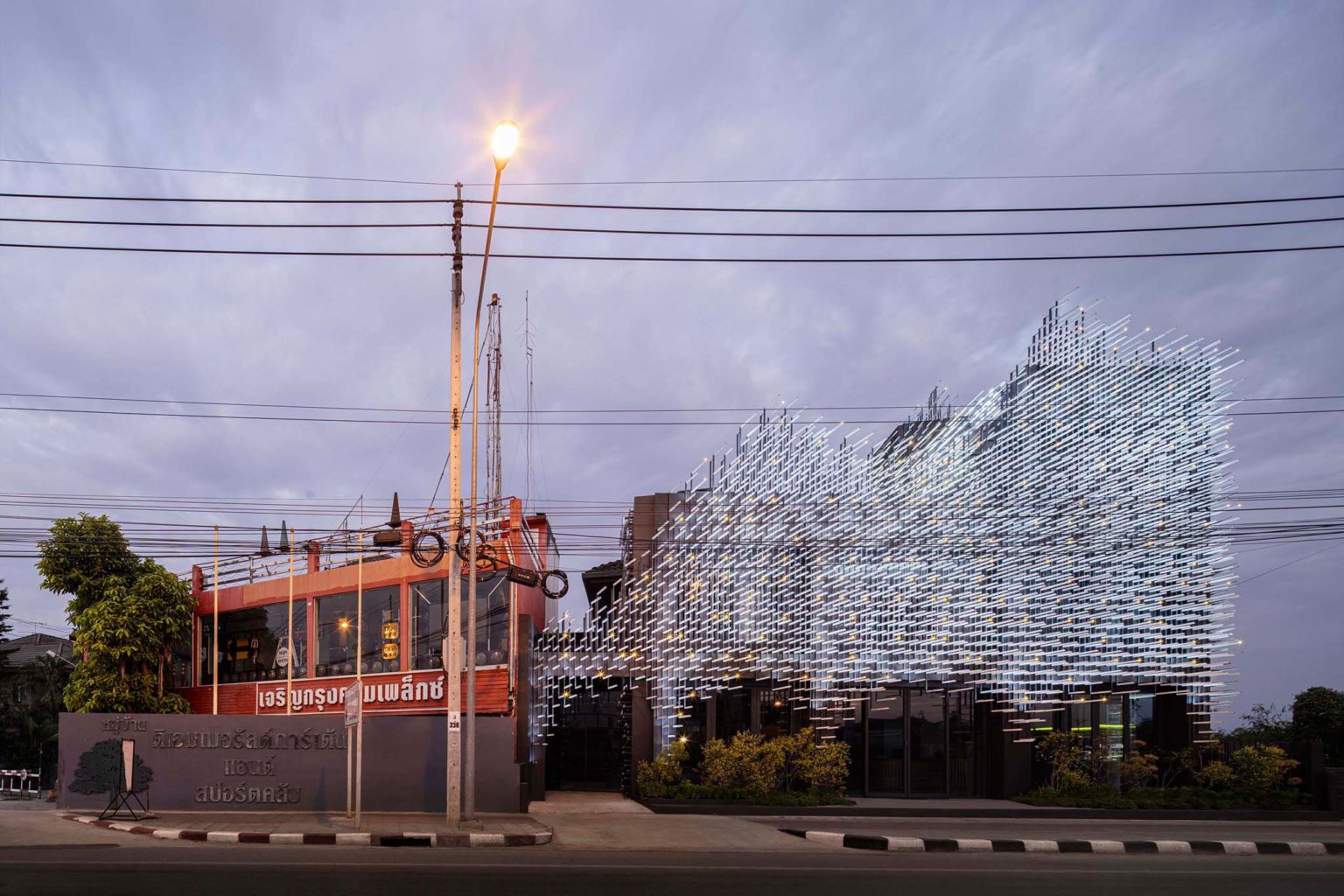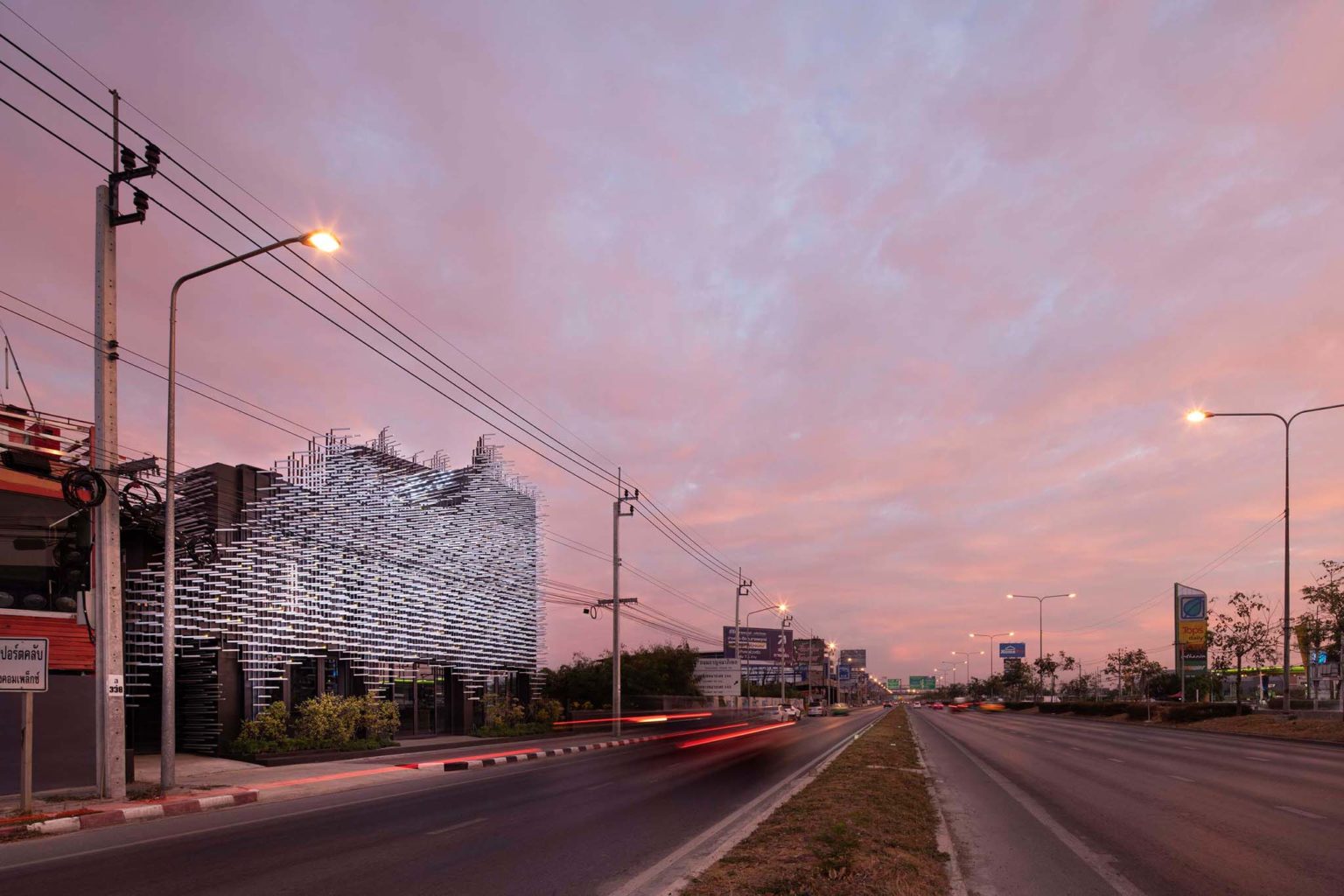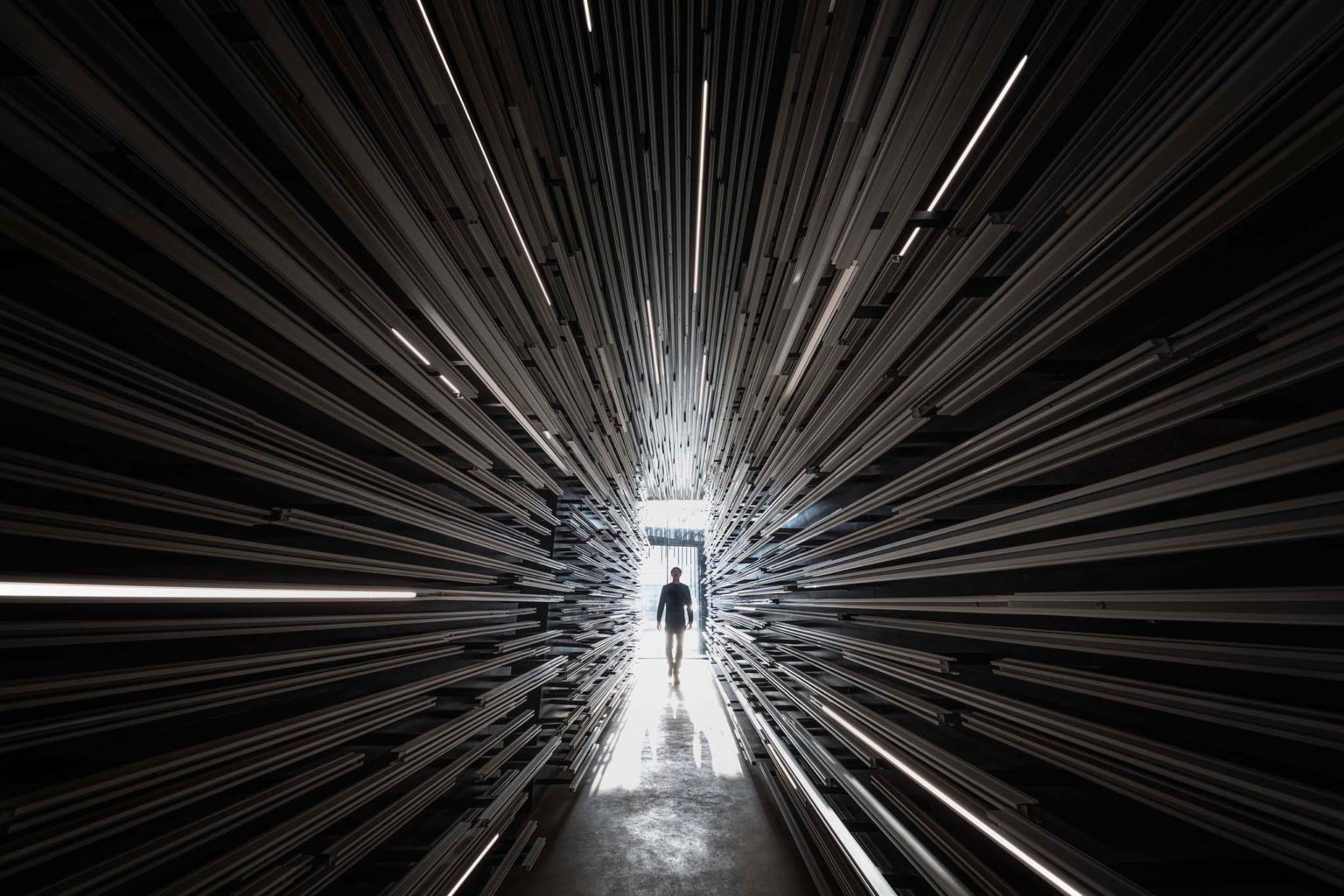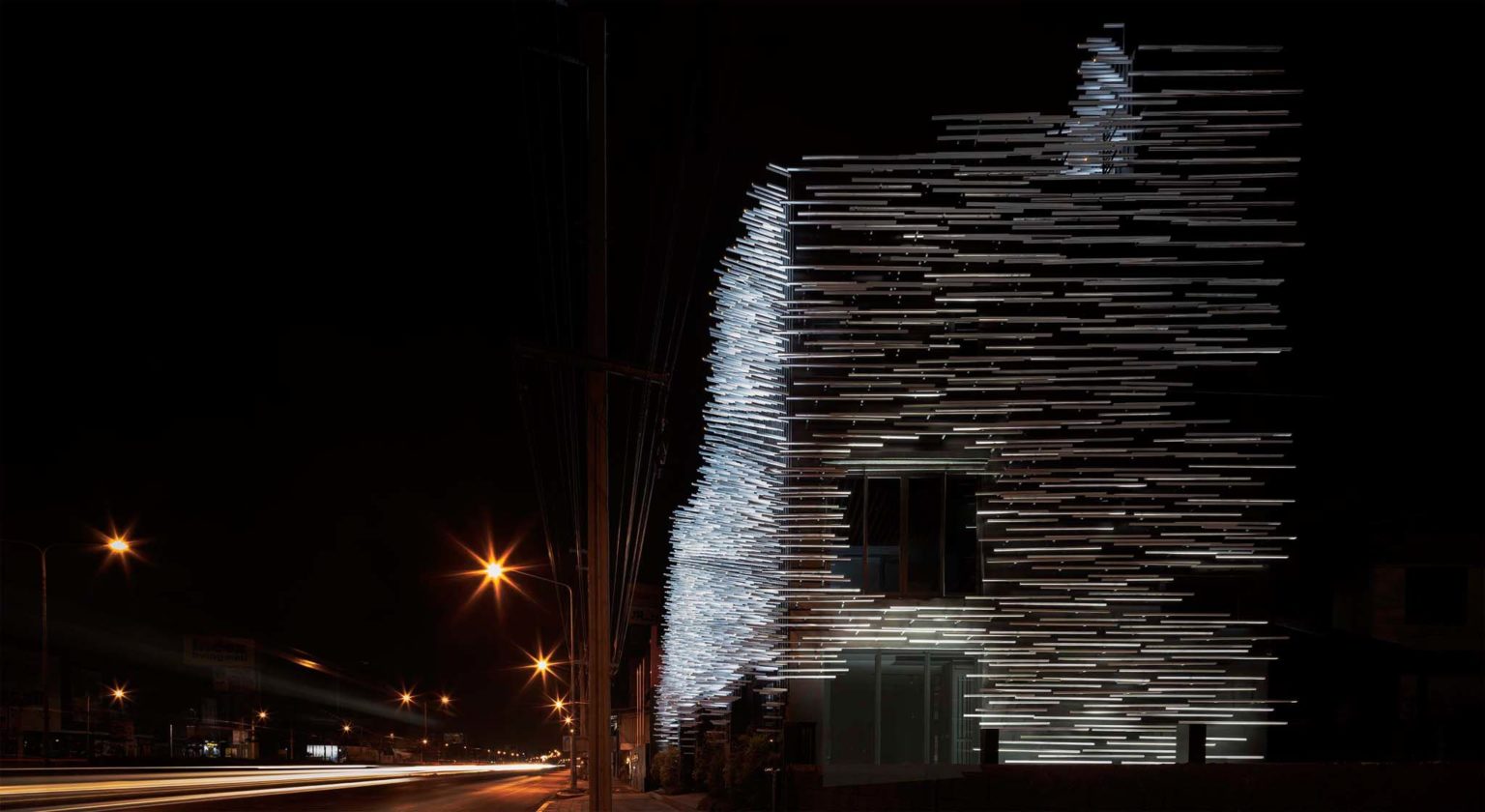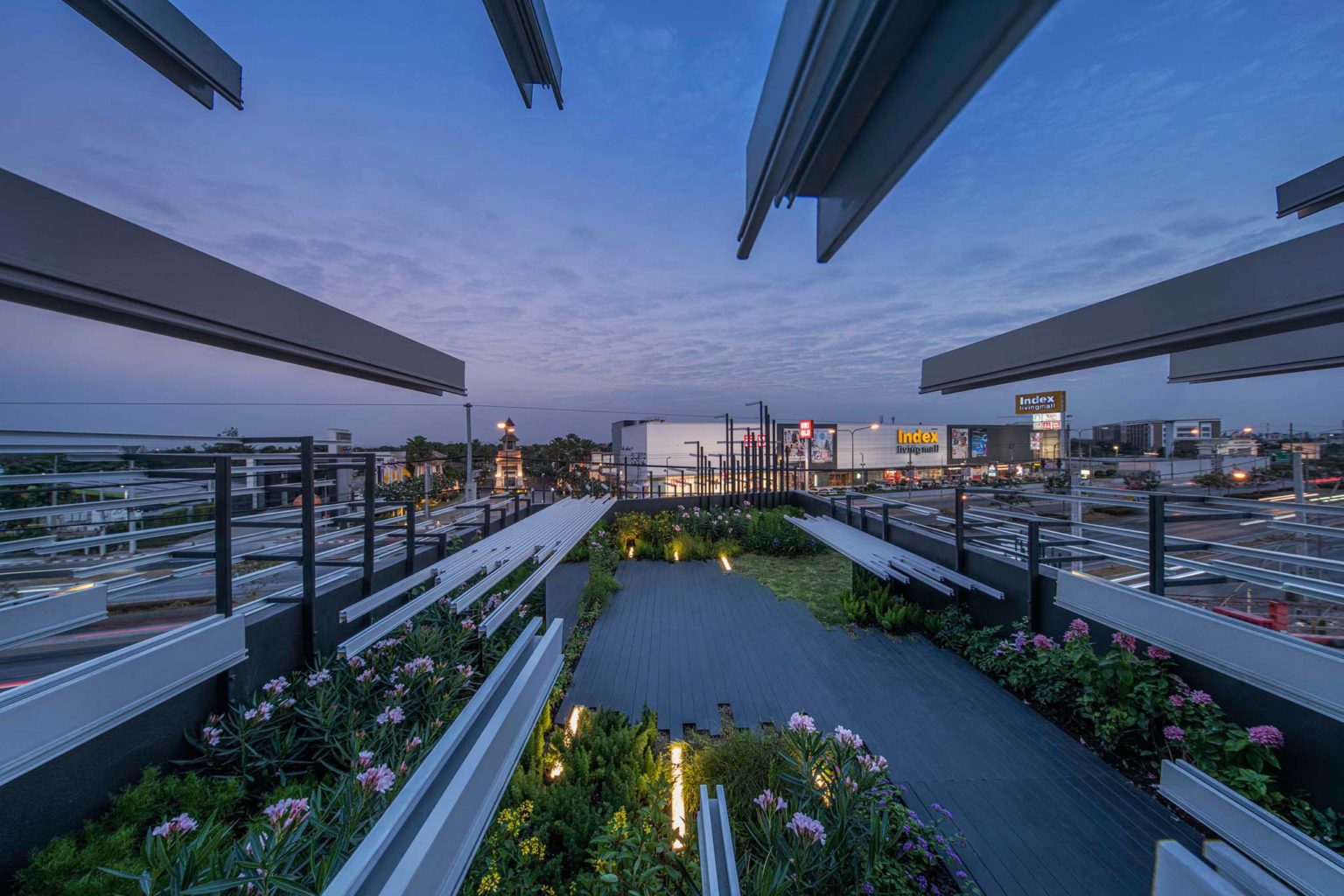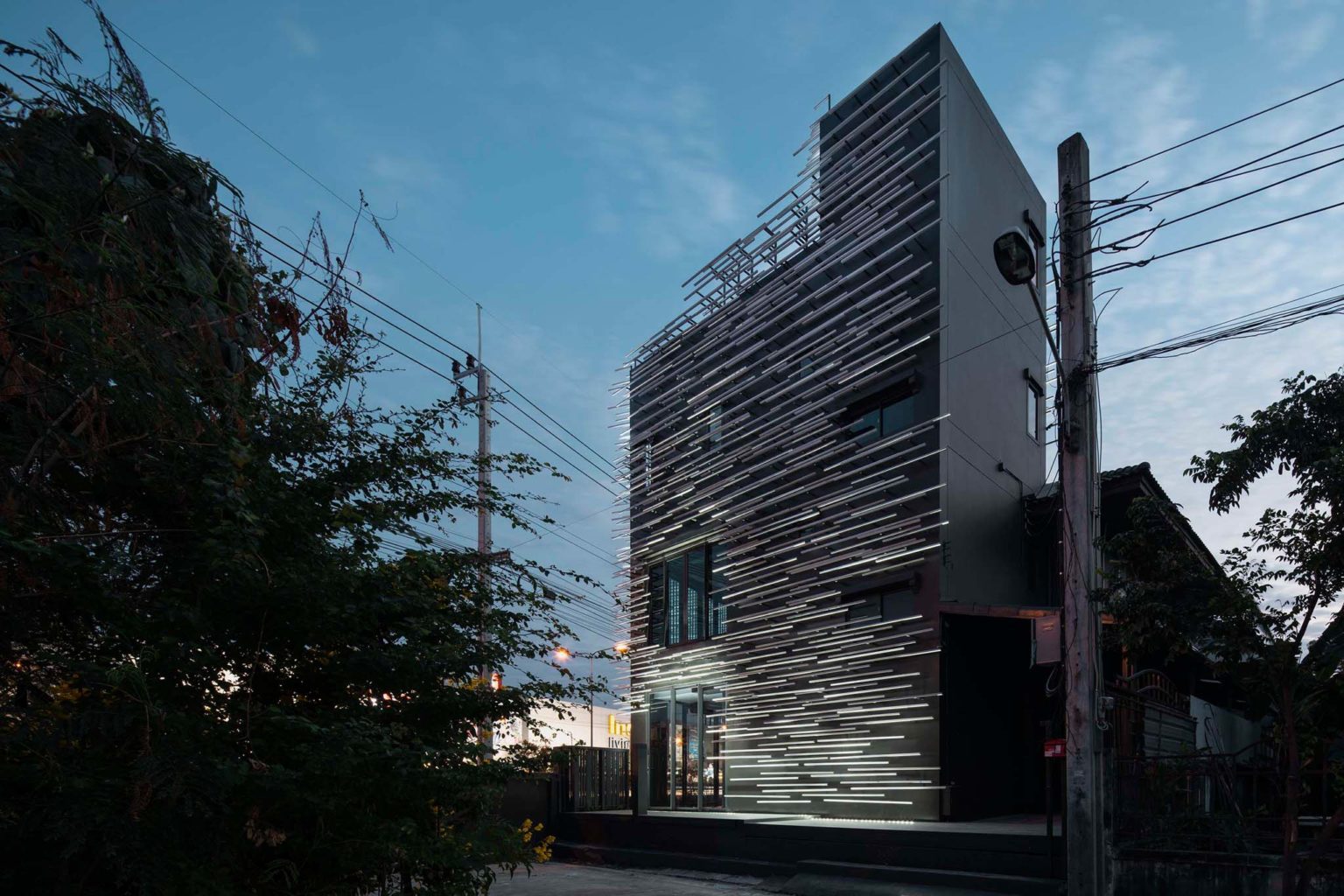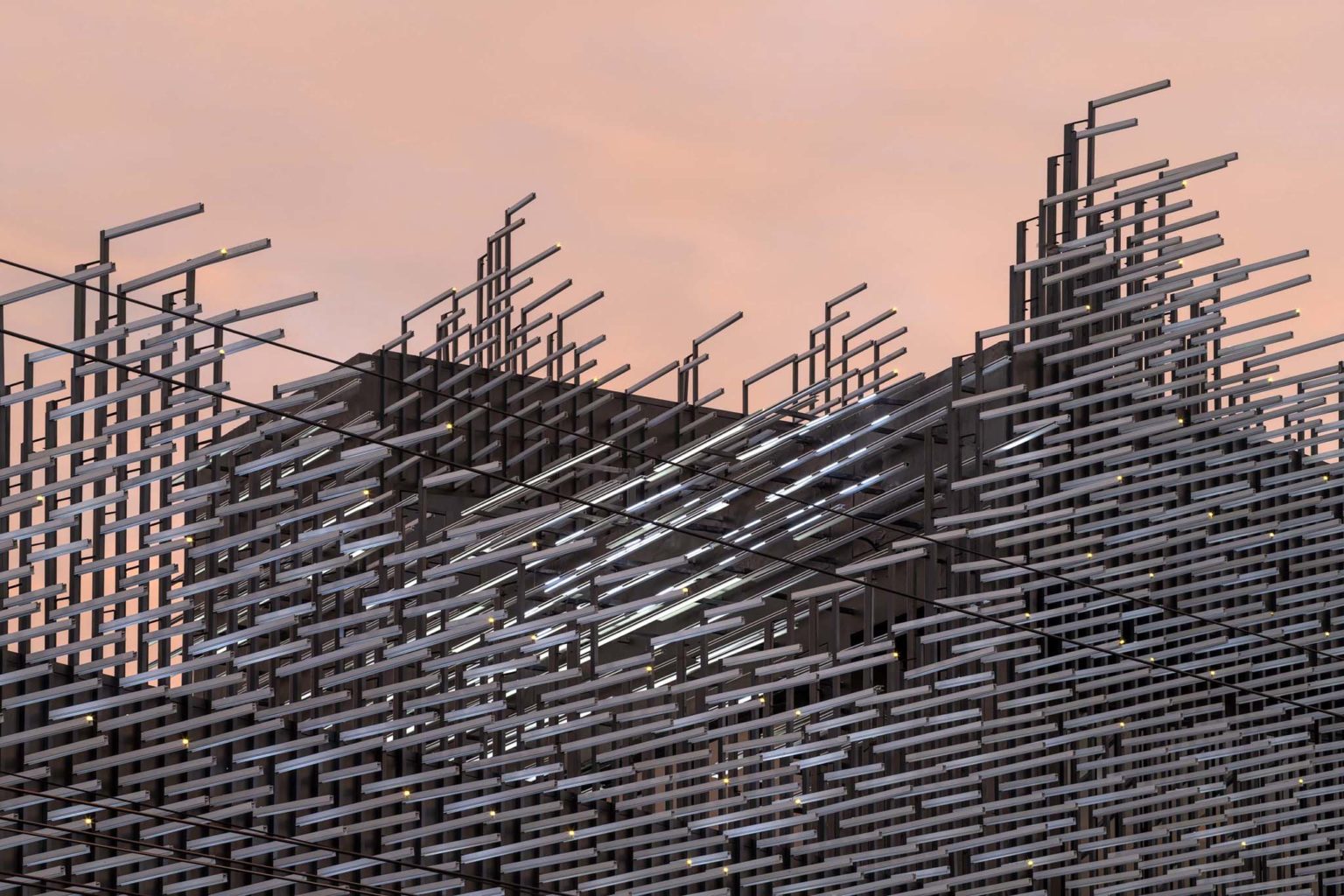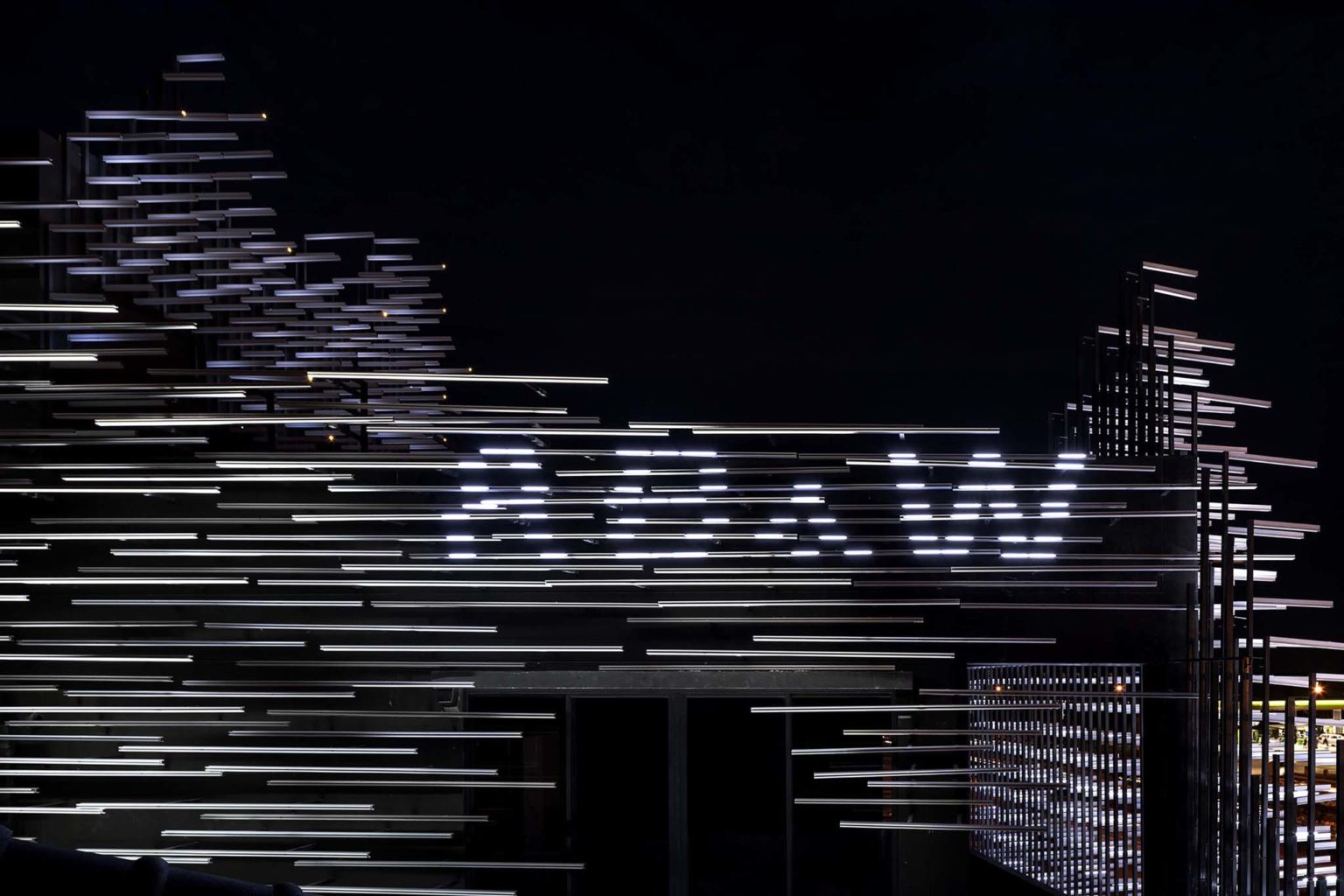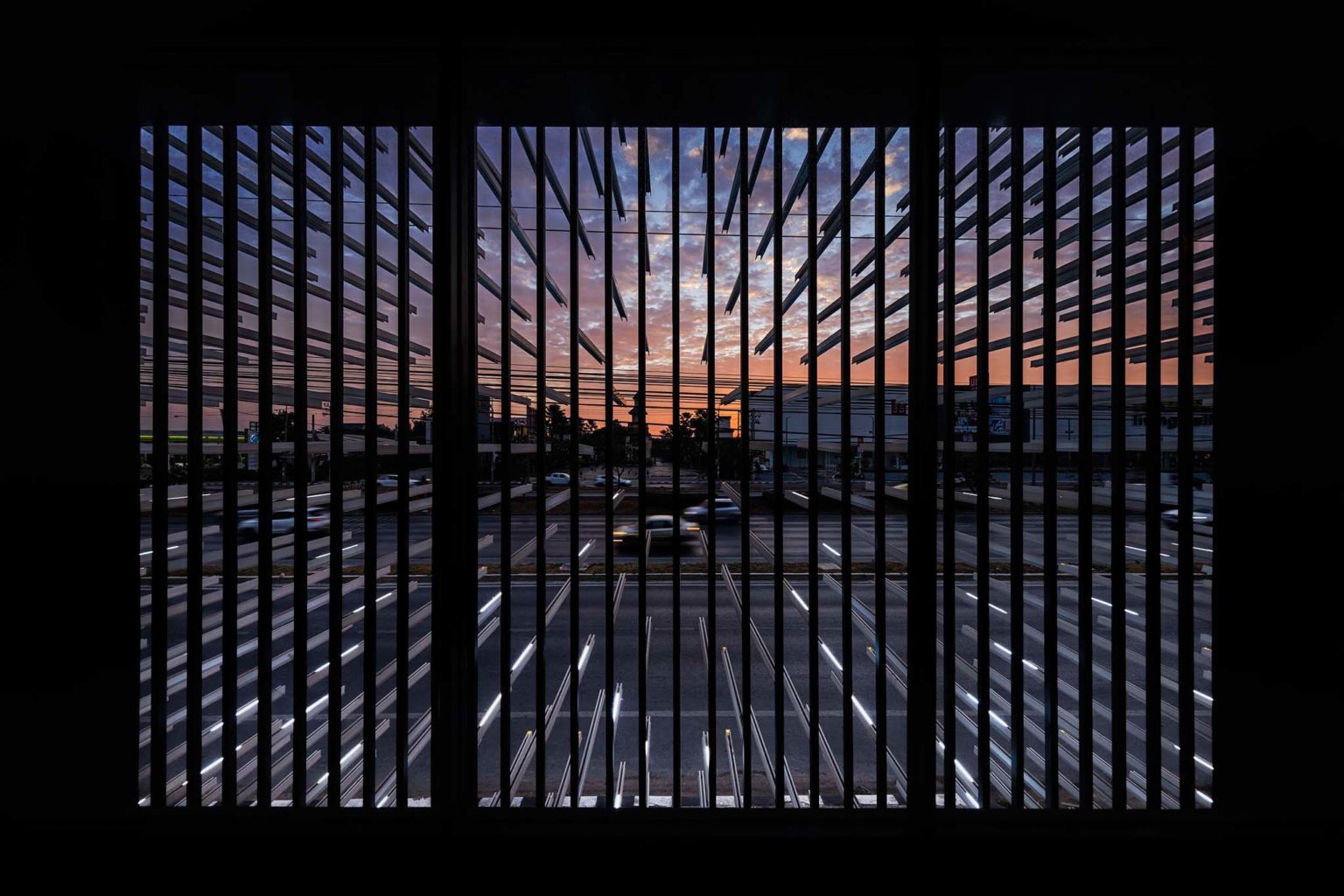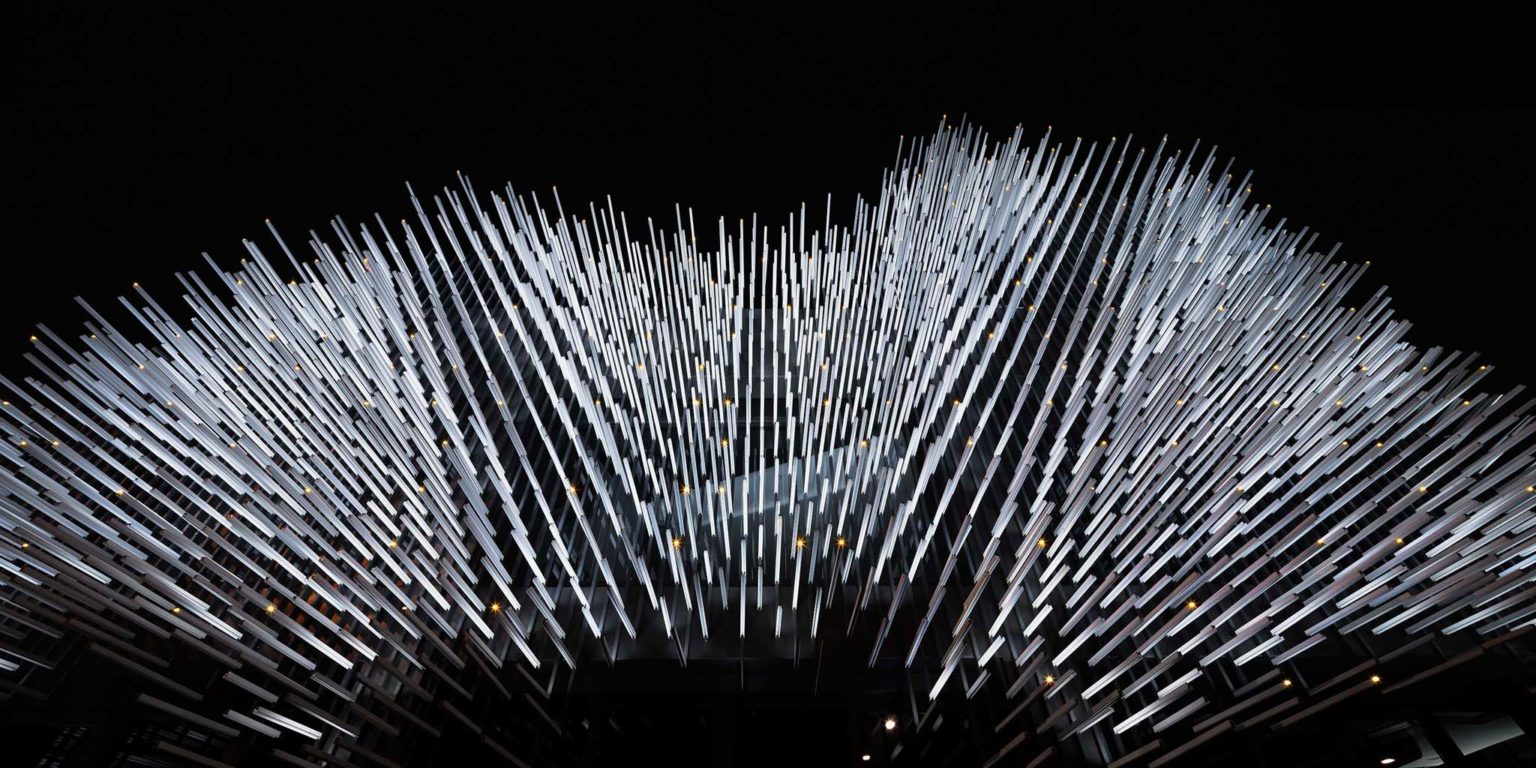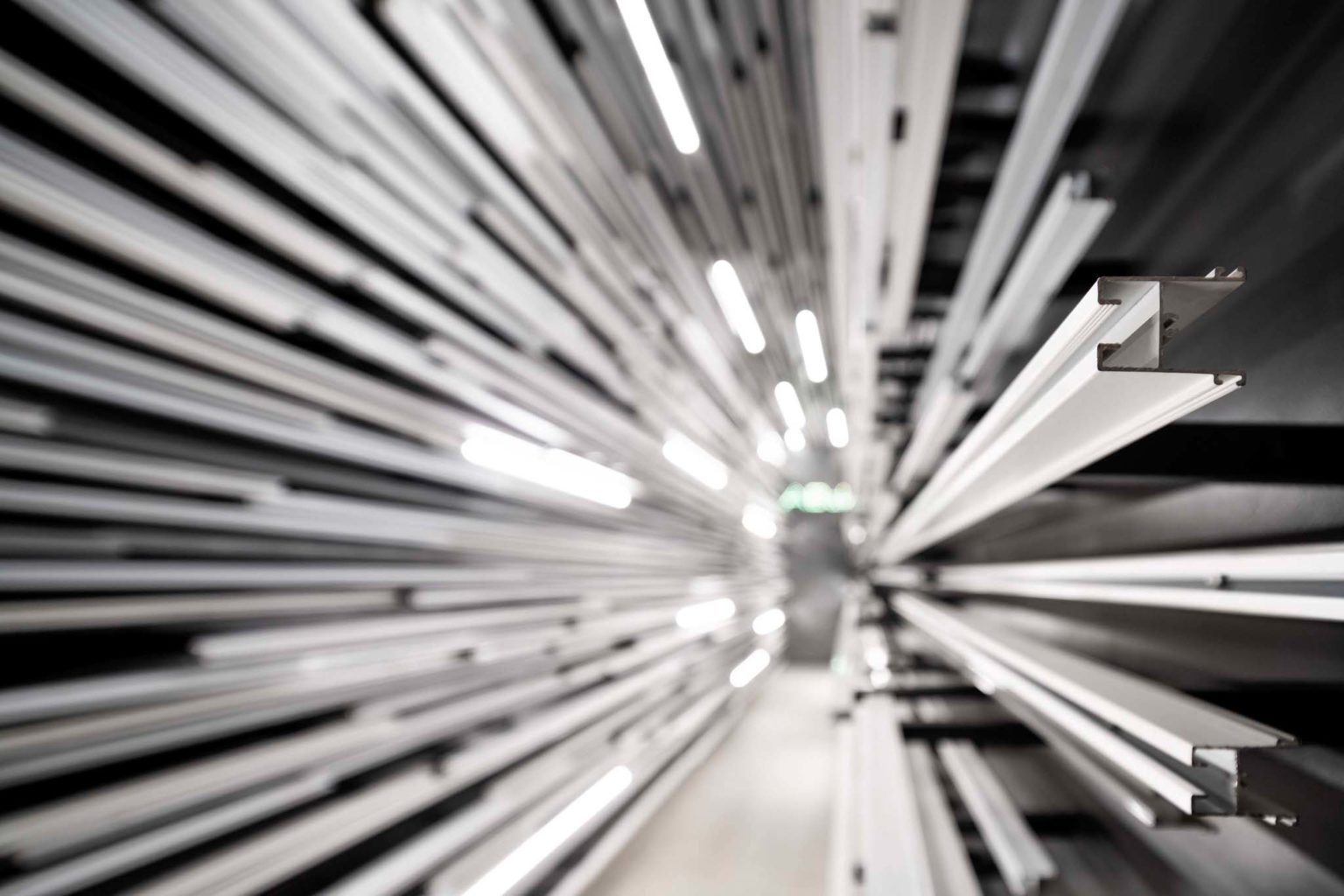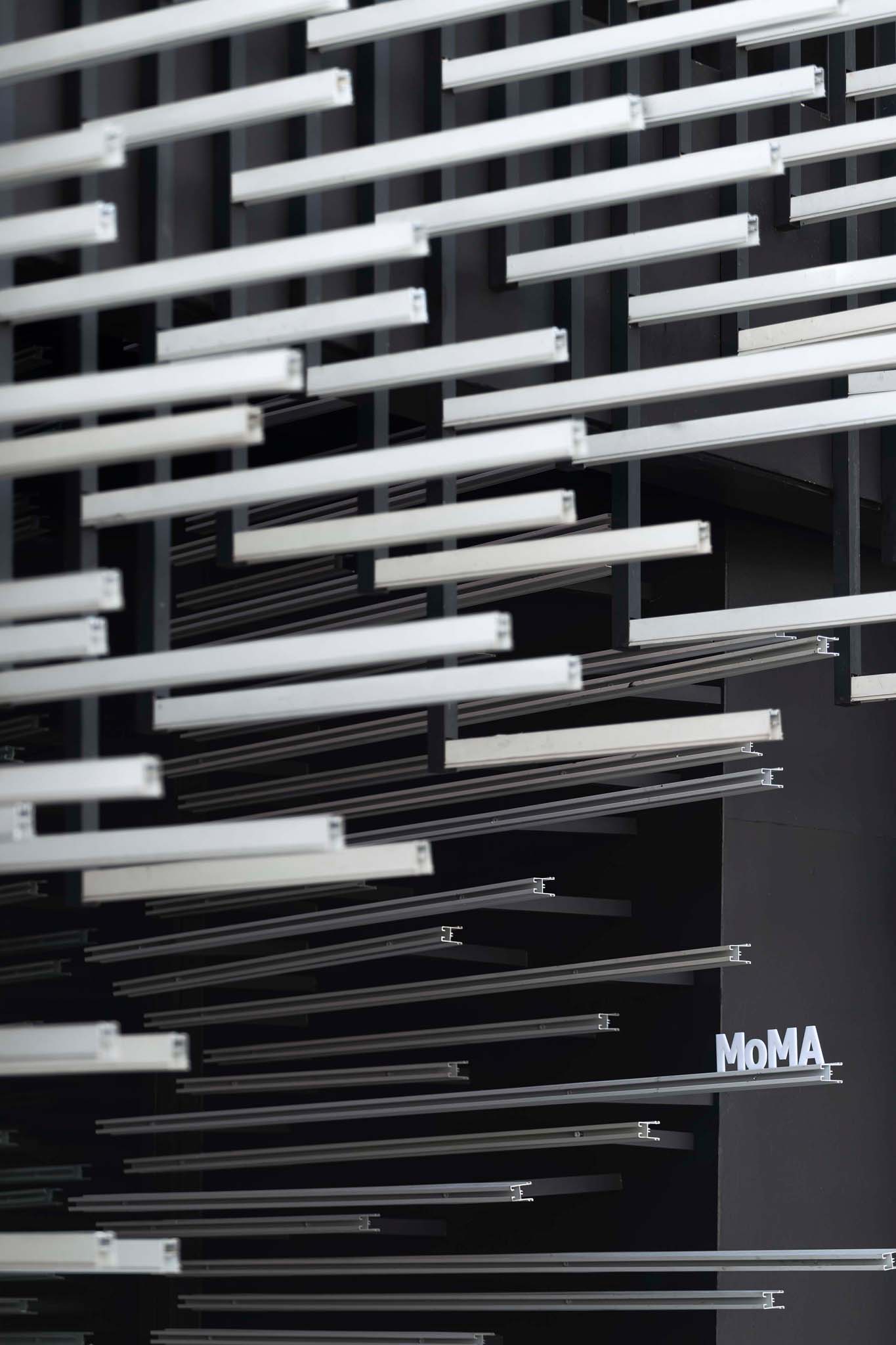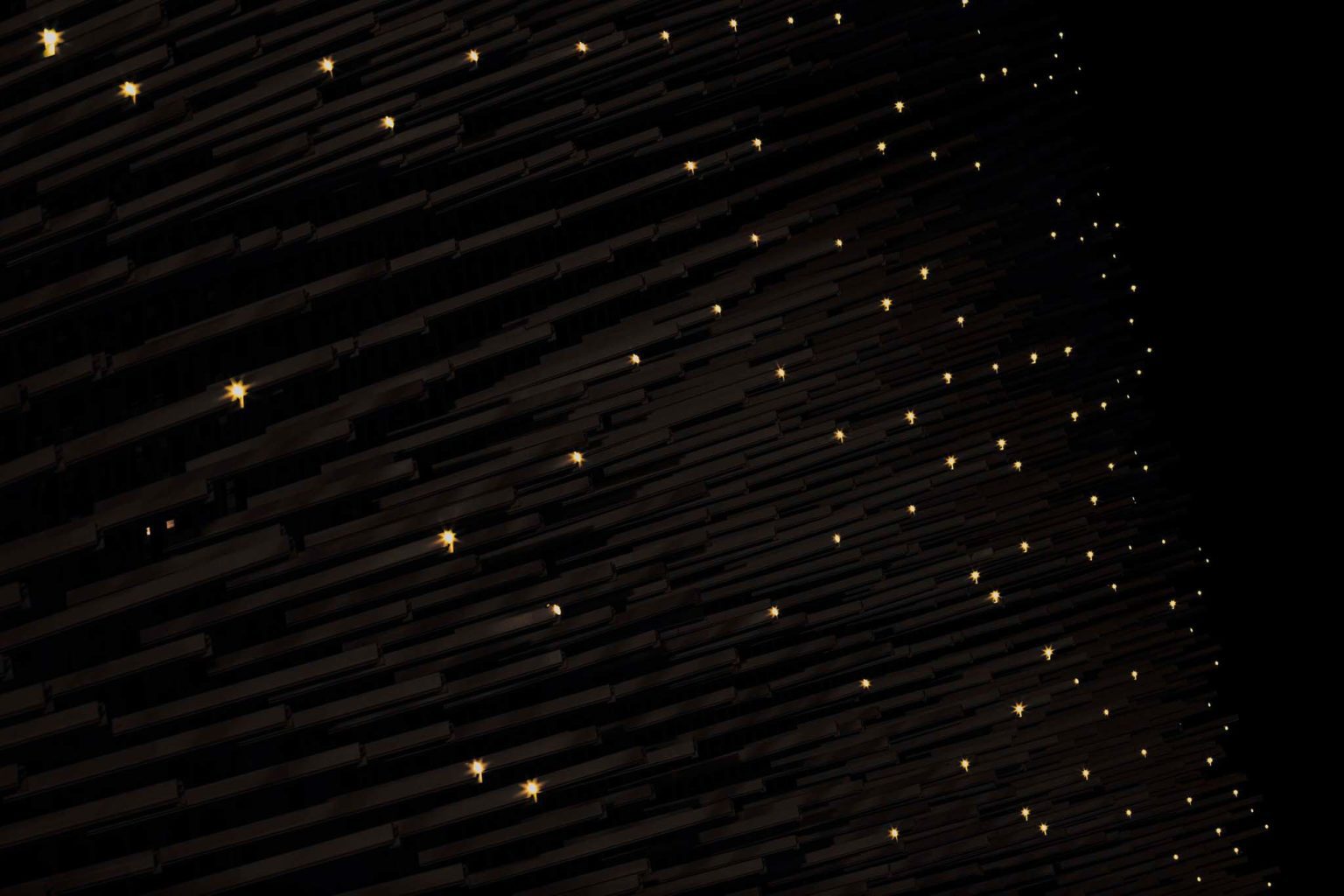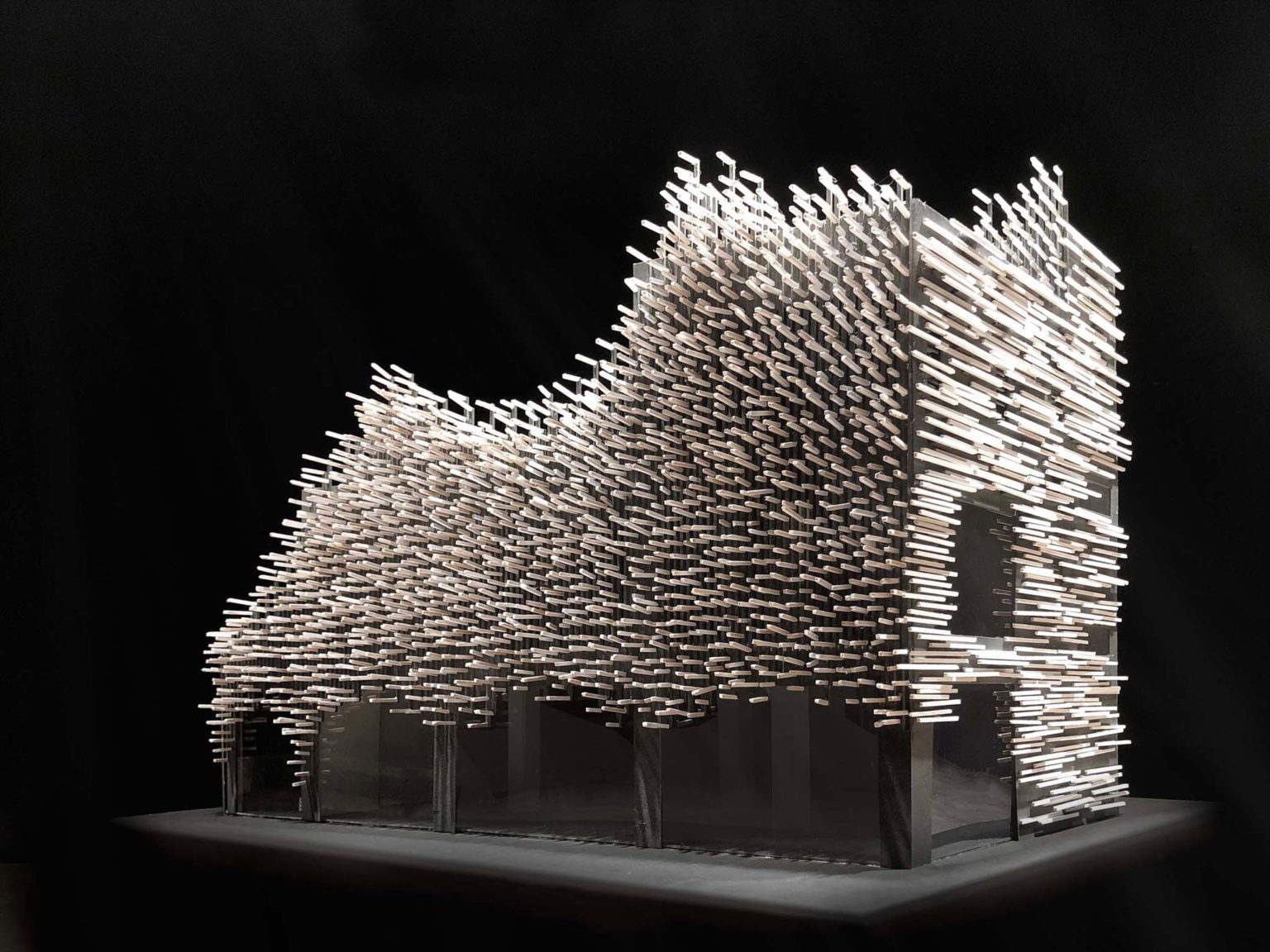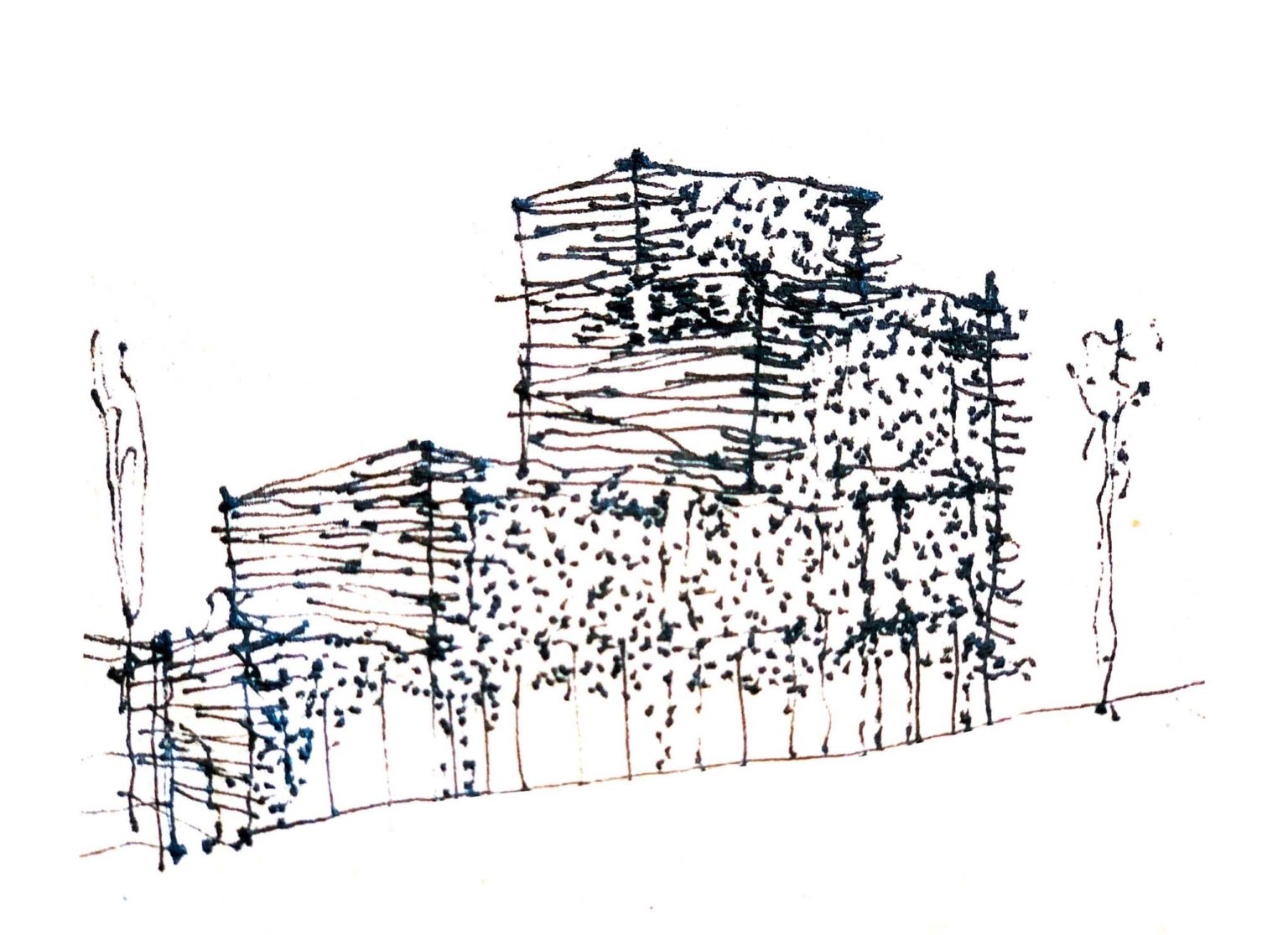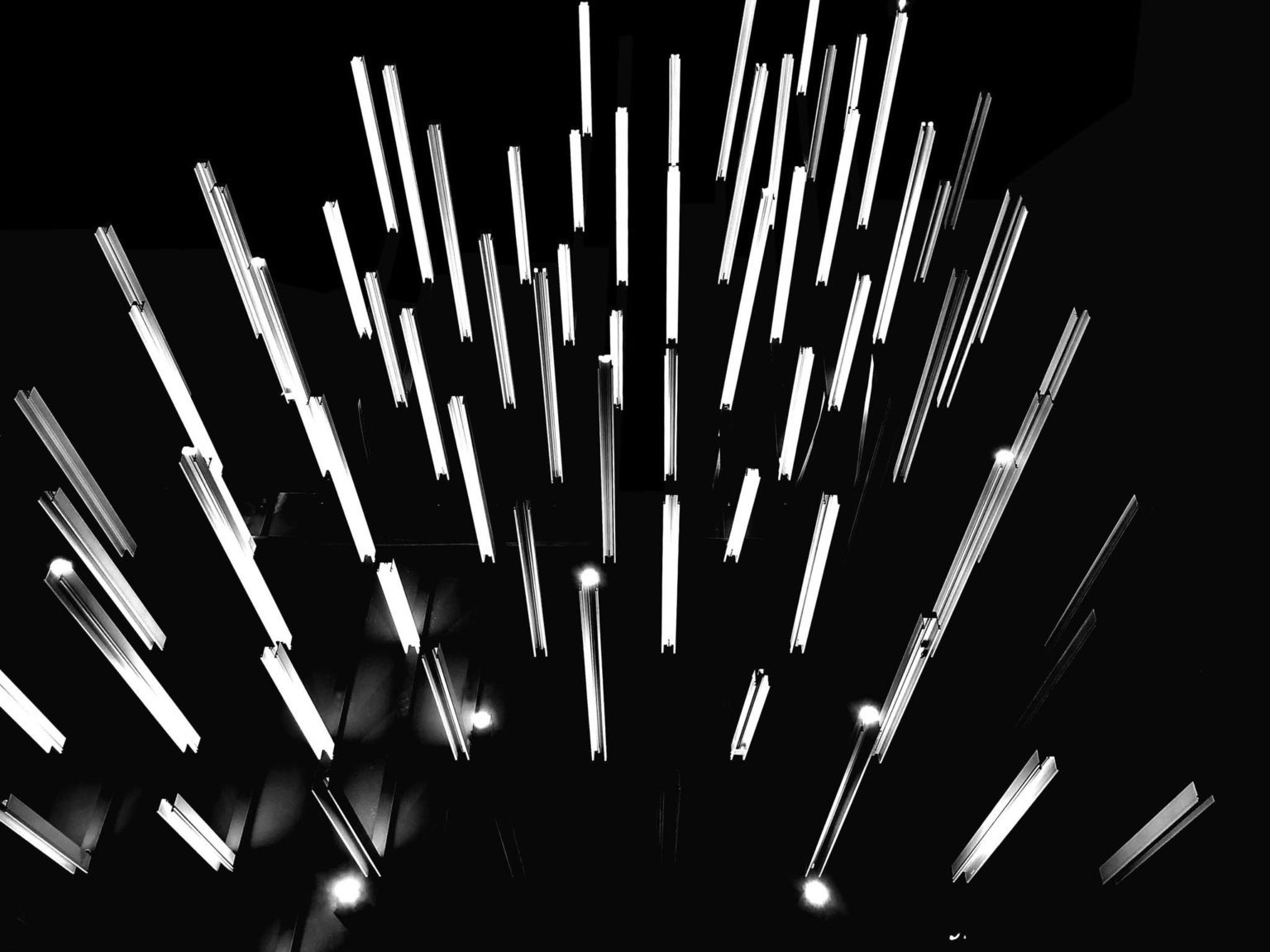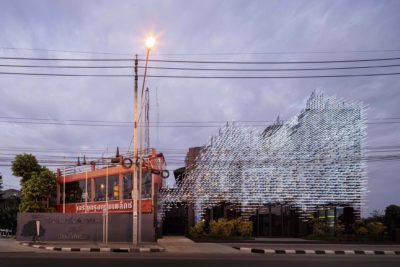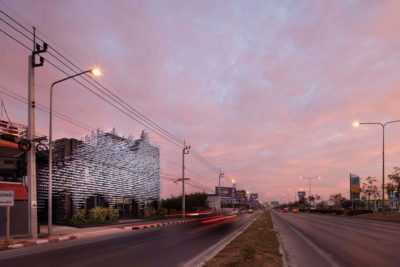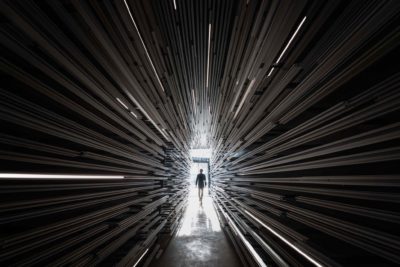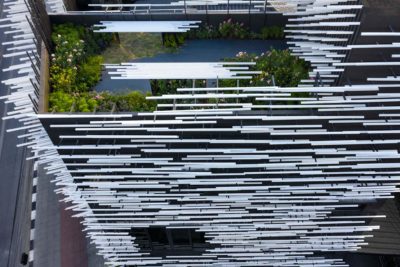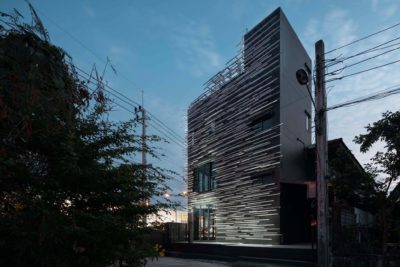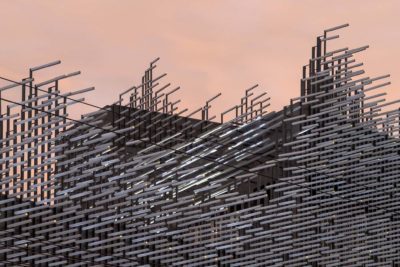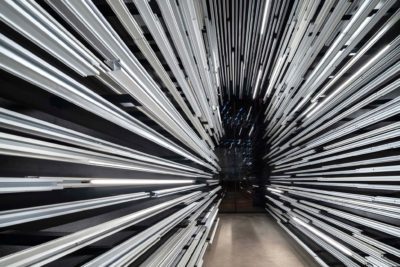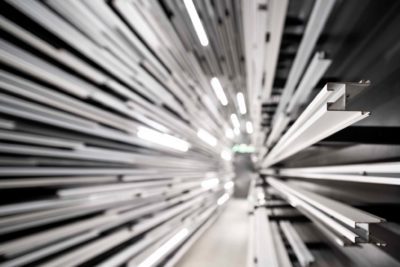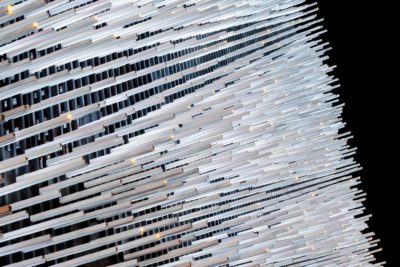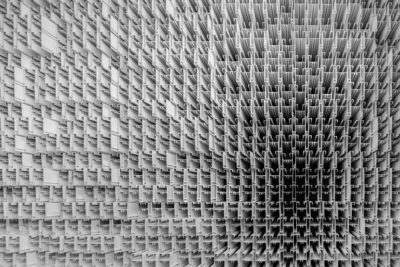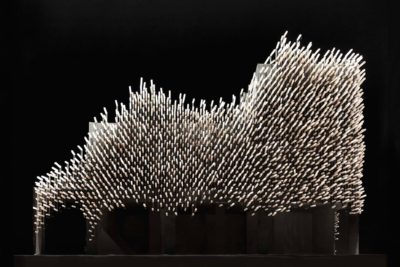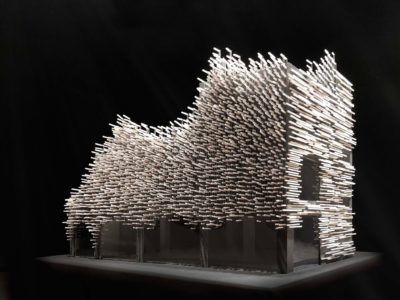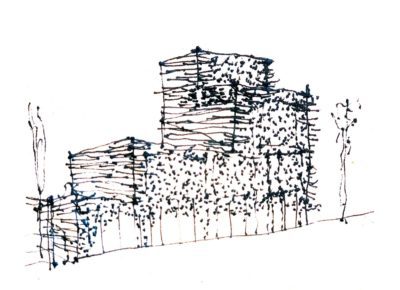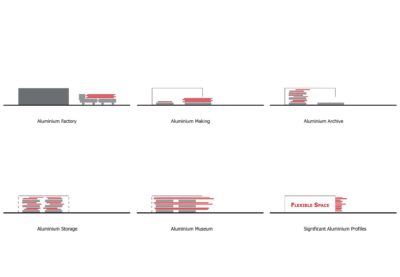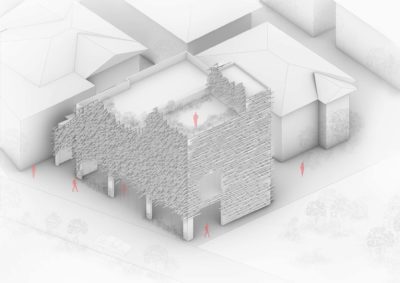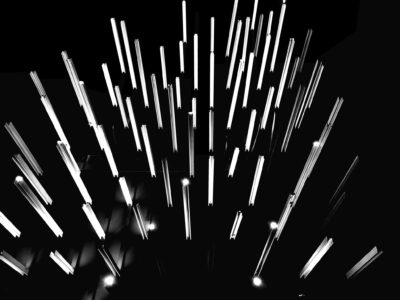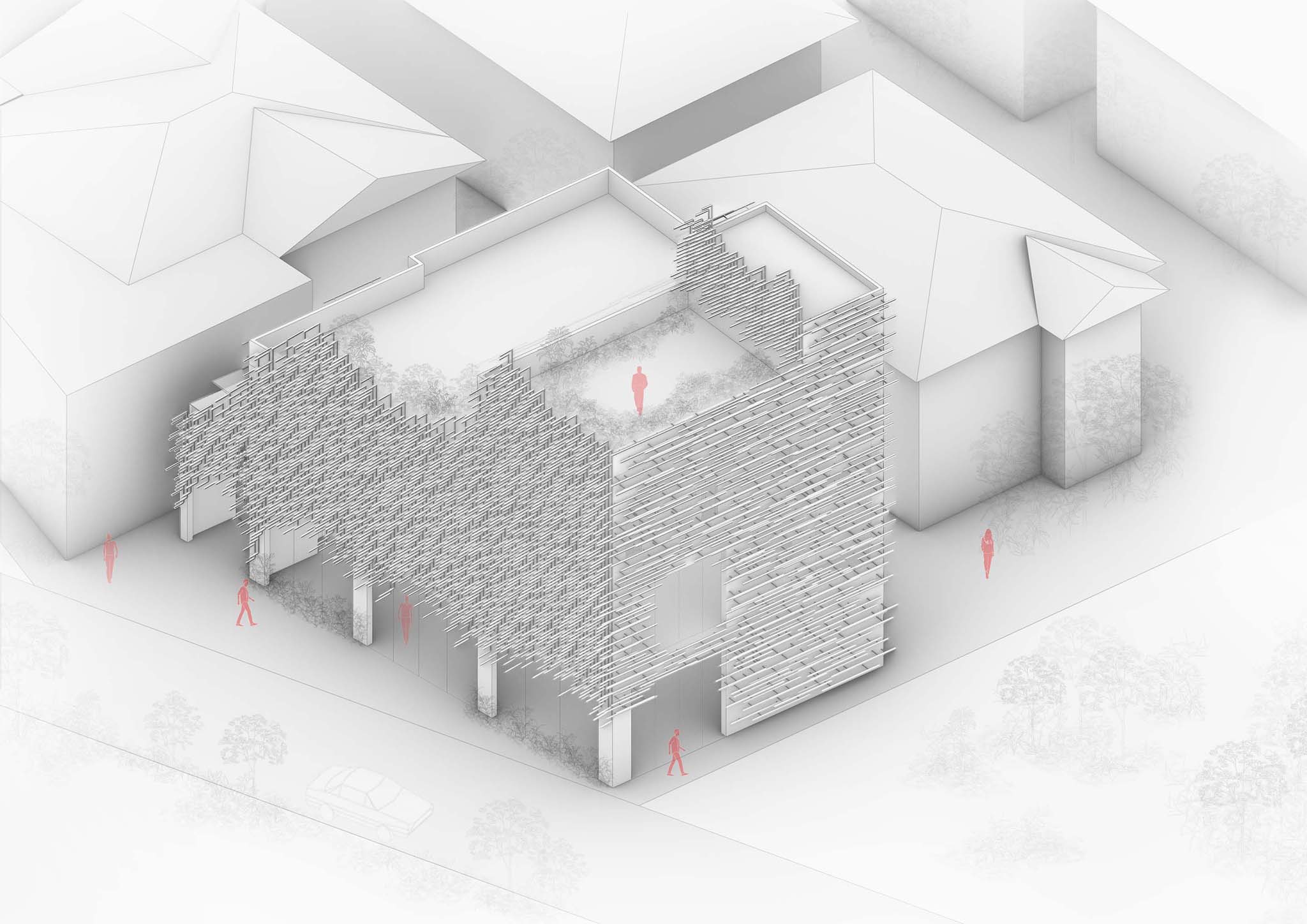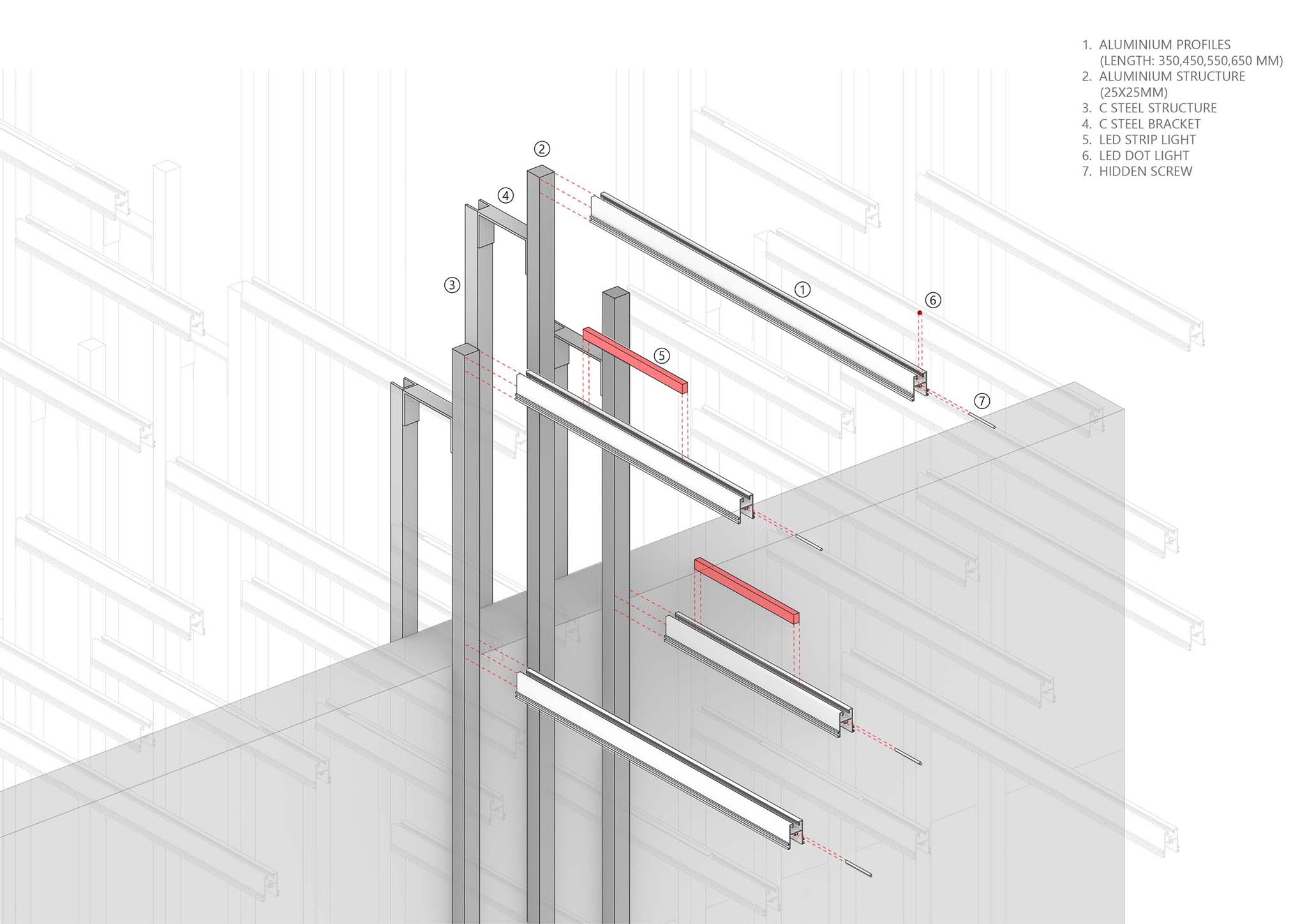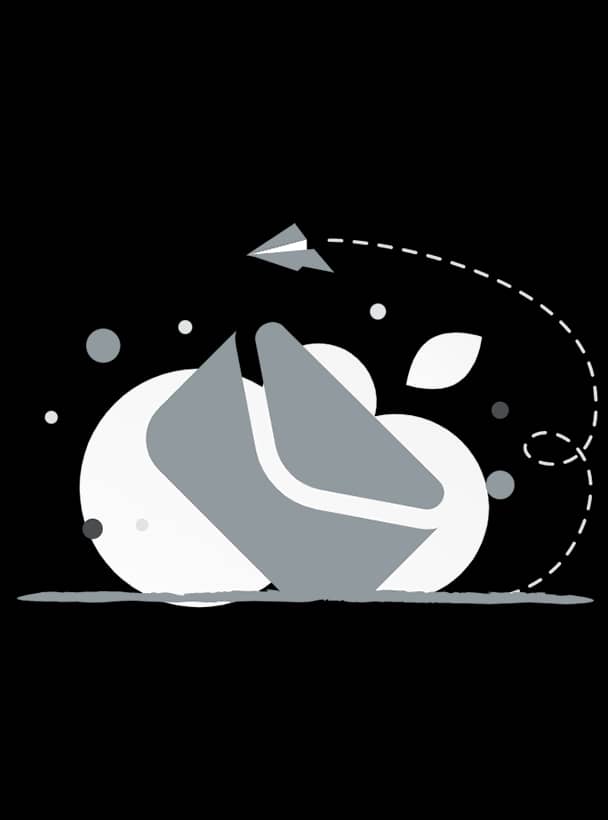Project Credits & Specs:
- Architects: HAS design and research
- Photographs: W Workspace
- Location: Nonthaburi, Thailand
- Area: 400 m2
- Year: 2022
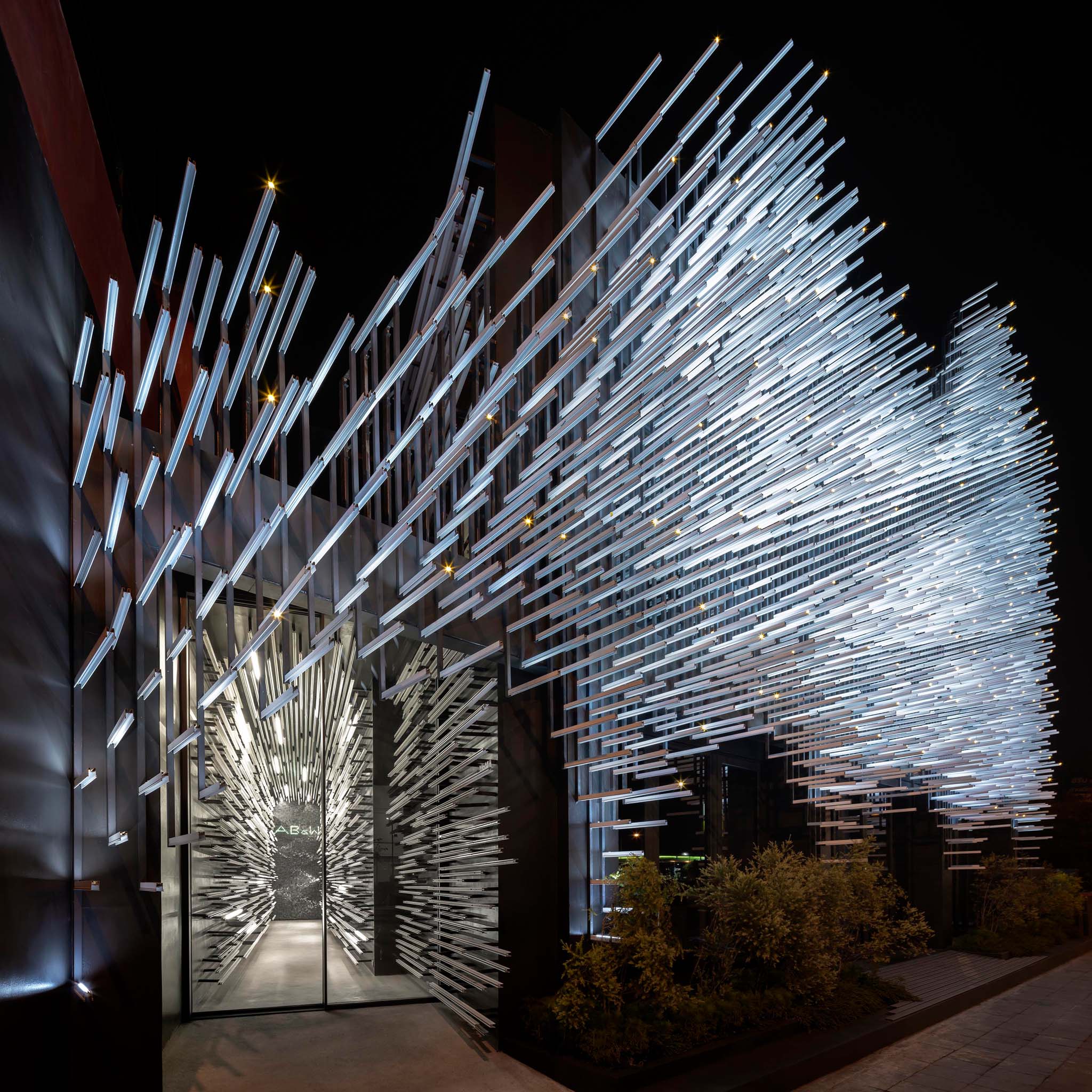
Project Description
MoMA is the abbreviation for the Museum of Modern Aluminum. The project originated from a group of ambitious clients with the goal of reviving the significance of aluminum in Thailand. Thailand was once the largest aluminum manufacturer in Southeast Asia at the end of the 20th century. Its diverse and abundant aluminum profiles not only satisfied the local market but were once known for exporting to overseas markets. However, the Asian Financial Crisis hit without warning in 1997. This prompted Thailand’s aluminum industry to sell aluminum profiles at low prices to hardware markets around the country in order to survive, resulting in the clutters of advertising signs, balcony fences, and ground floor extensions that make up the present-day Bangkok streetscape.
MoMA was born out of such an environment. It is located at the busiest traffic hub on the outskirts of Bangkok, where heavy traffic has led to a variety of commercial signs lining Ratchaphruek Road. The main roads lead to The Grand Palace, Wongwian Yai, Bangkok University, and Ko Kret, the only island in Bangkok. More than a decade ago, fireflies populated Ko Kret, making the island a natural retreat for Bangkokians.

HAS design and research wanted MoMA to serve not only as a public space but also as a getaway for busy urban dwellers. The building extends the natural landscape of Ko Kret Island to the project site. During the day, MoMA is a dandelion, with its overhanging elements swaying in the wind, bringing softness and lightness to the busy Ratchaphruek Road; at night, MoMA transforms into a firefly, adding a sense of nature and peacefulness to the highly commercialized Ratchaphruek Road.
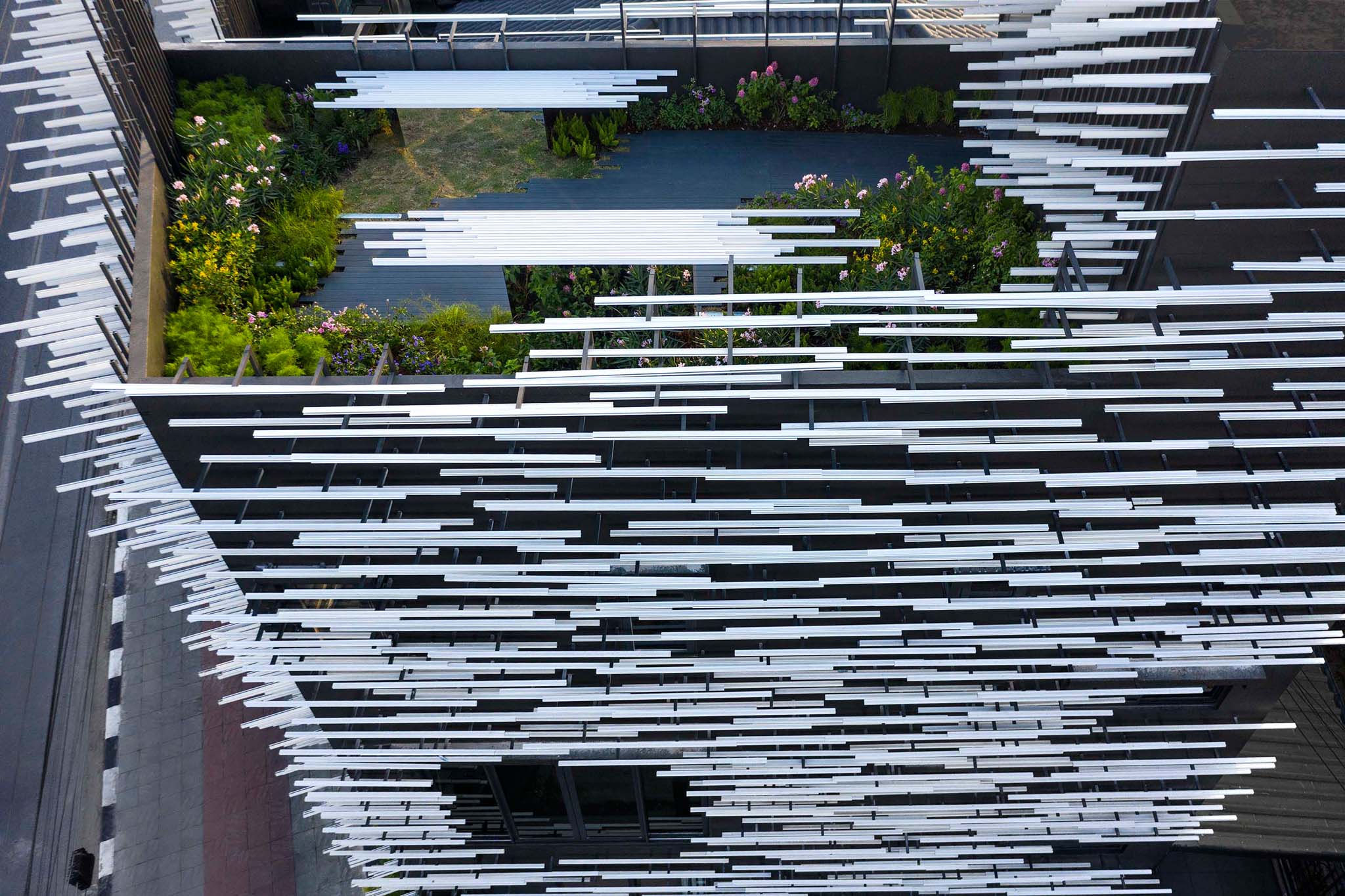
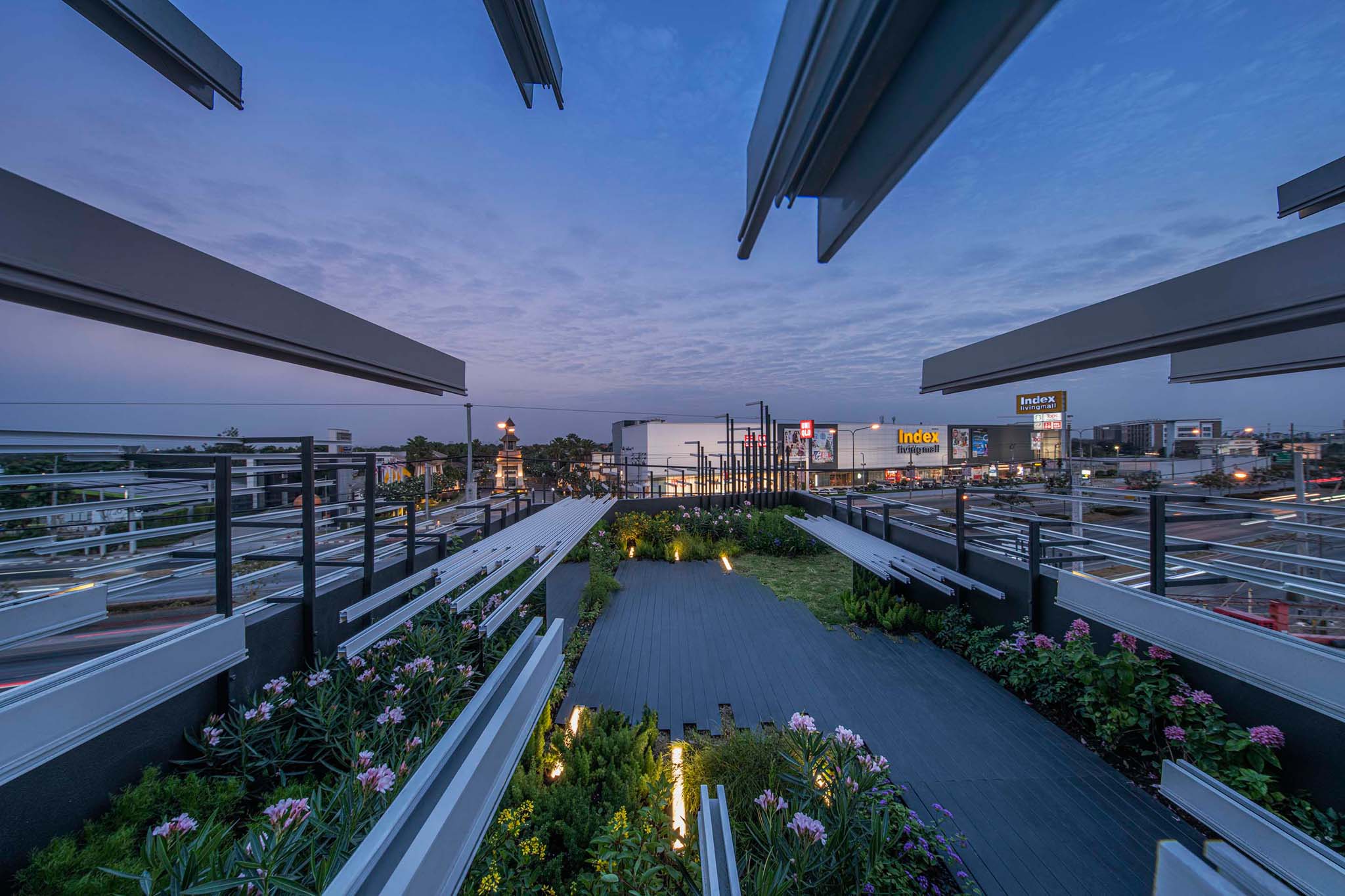
MoMA not only uses aluminum strips as display items but also allows them to continue in the architecture, the interior, the landscape, as well as the lighting and furniture, creating a sense of totality inside and outside. The façade is clad with tens of thousands of aluminum strips, each with a slightly different color and texture, just like the feathers of a dandelion. The aluminum strips, combined with LED lighting, extend from the front façade to the two side façades, and then straight through the “tunnel” space on the west side, filtering and dampening the noise of the external environment and guiding visitors to the quiet exhibition place.
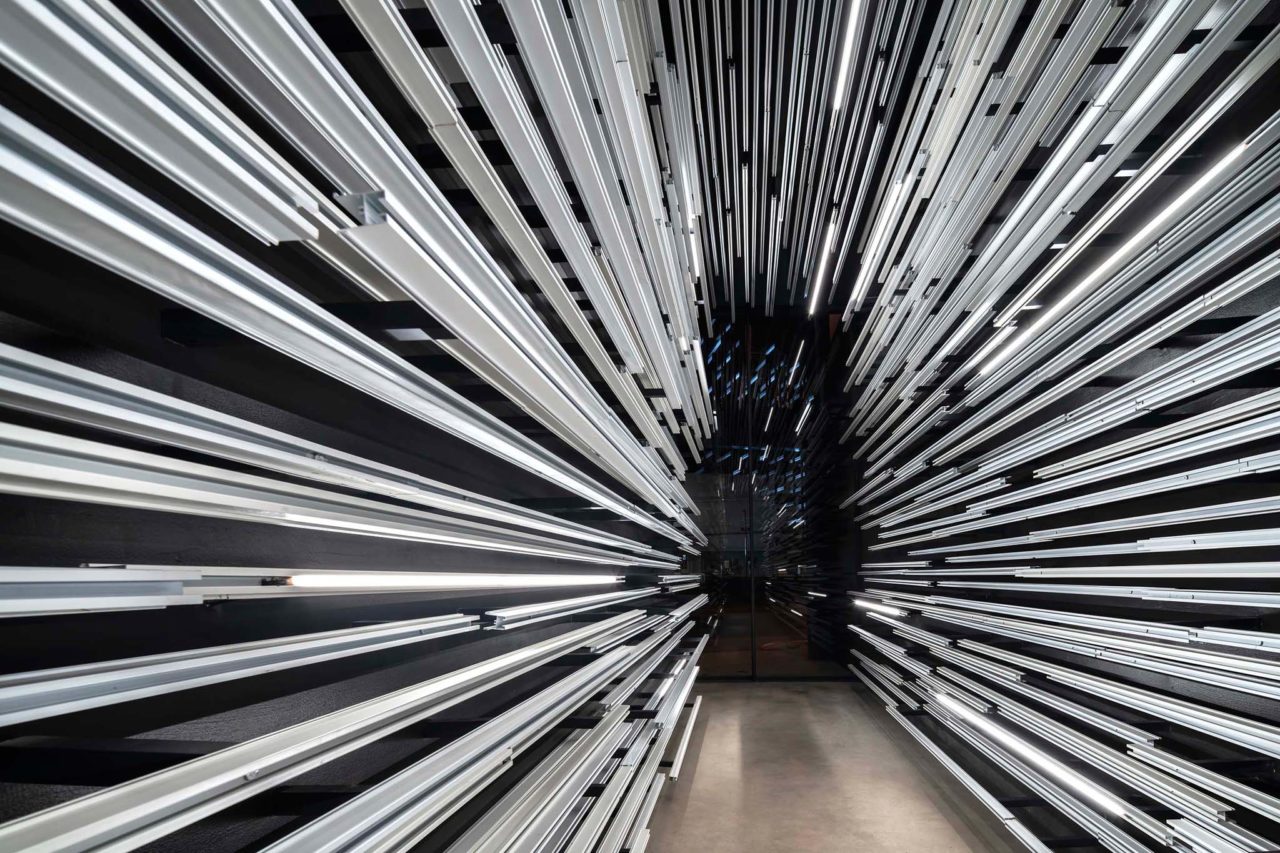


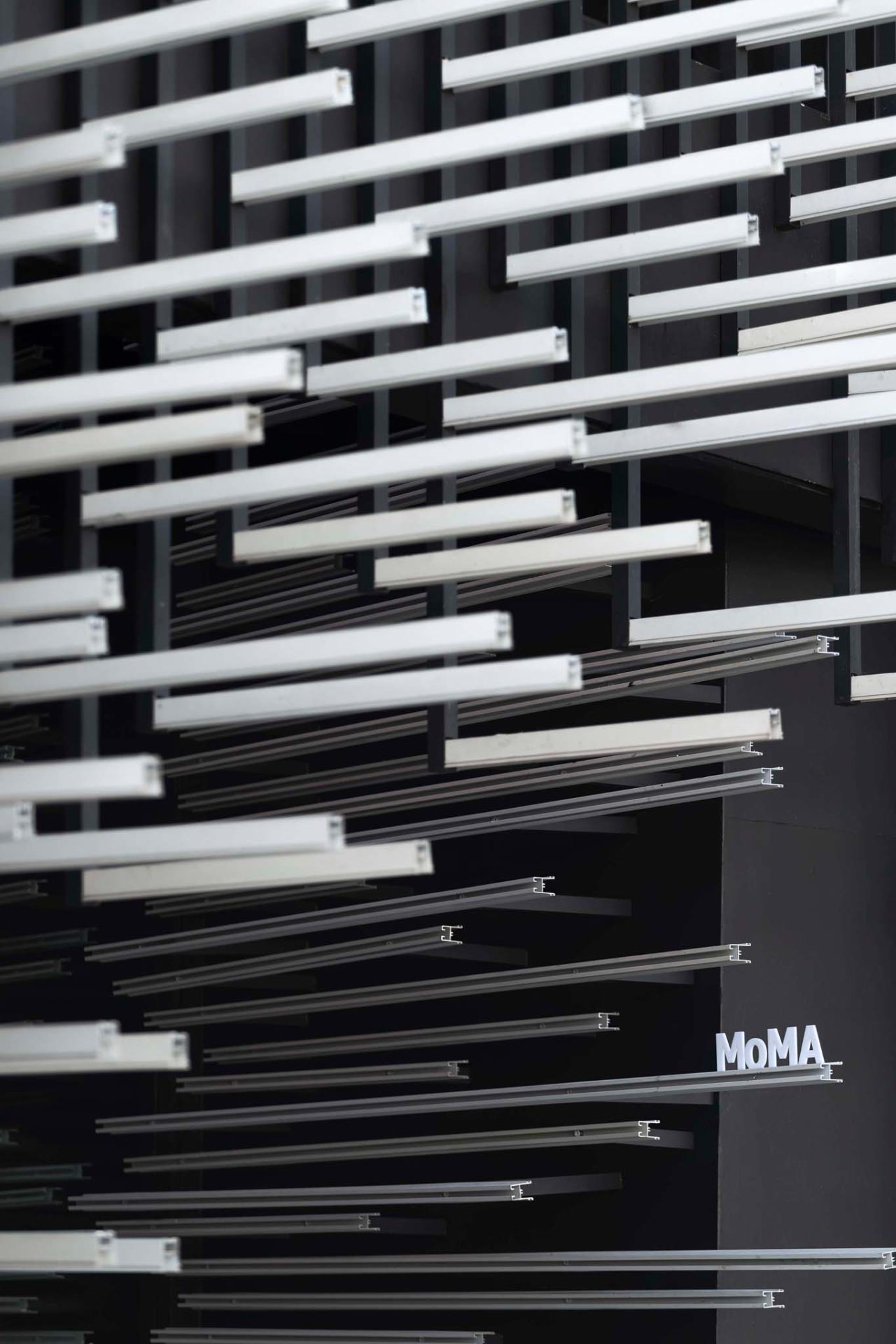
The aluminum strips on the façade not only provide a variety of lighting functions but also shade the interior from excessive sunlight to maintain a comfortable interior environment. The flexibility of the exhibition space can meet a variety of display, reception, and activity needs. On the top floor, the enclosed landscape resembles a floating island with seasonal plants, creating an urban ecological site for fireflies to flourish.

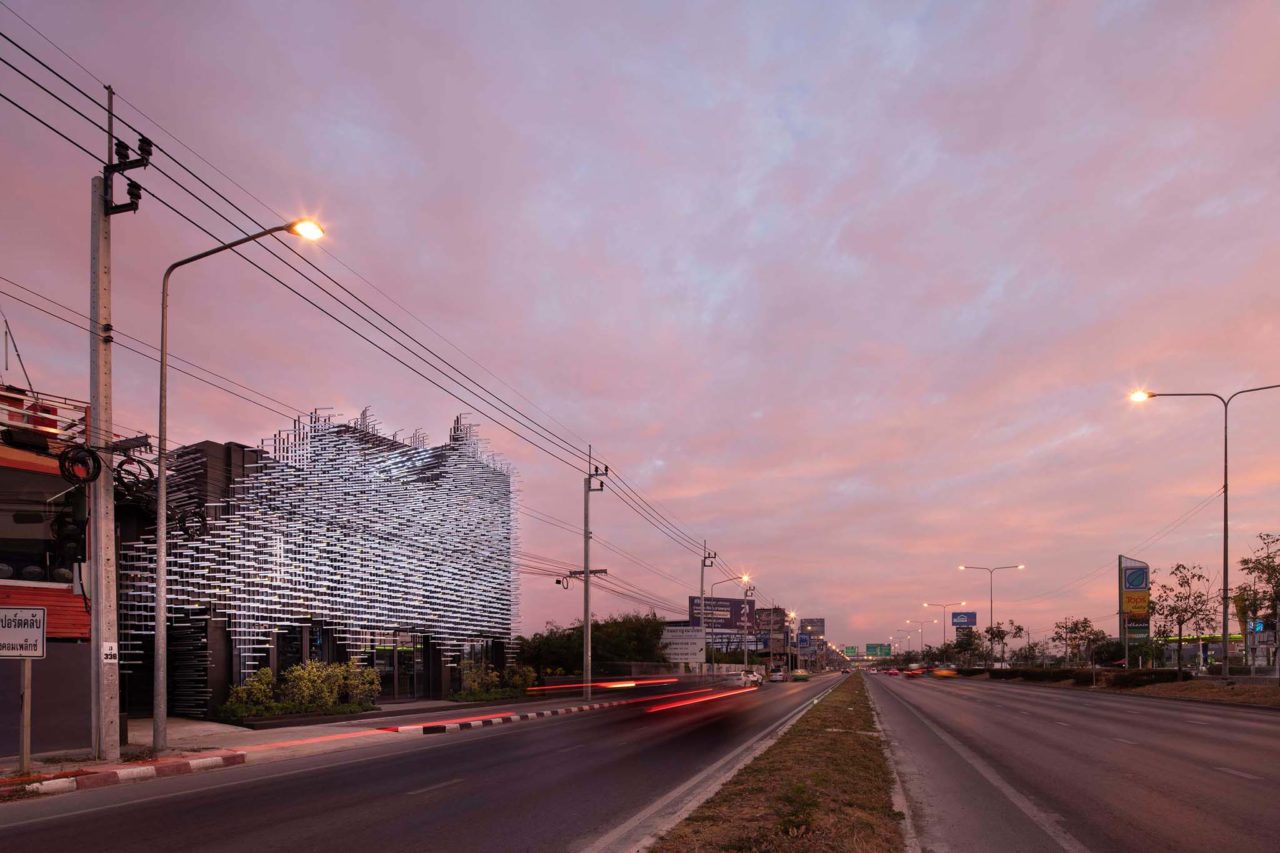
The design process of MoMA began with the study of aluminum signboards commonly seen on the streets and then used aluminum as an element to link the entire building. Through the investigation and research of aluminum profiles, a distinct architectural texture is created, and a new sense of vernacular is discovered in Thailand’s concrete jungle.
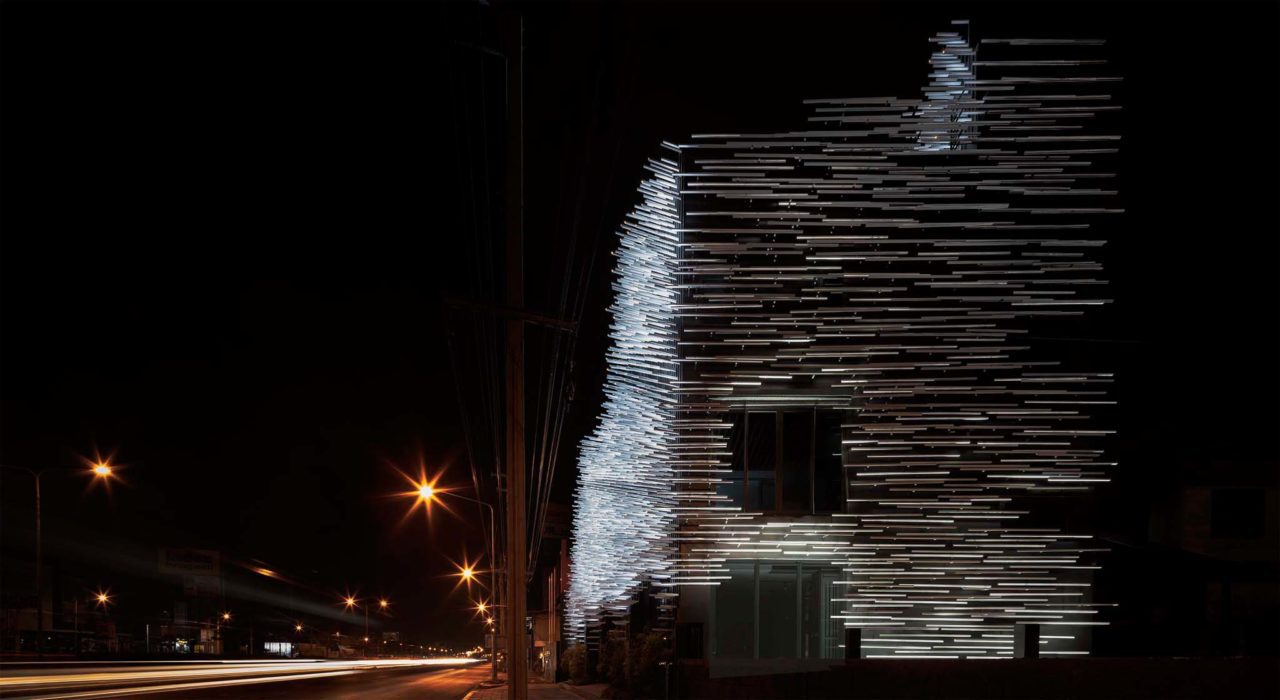
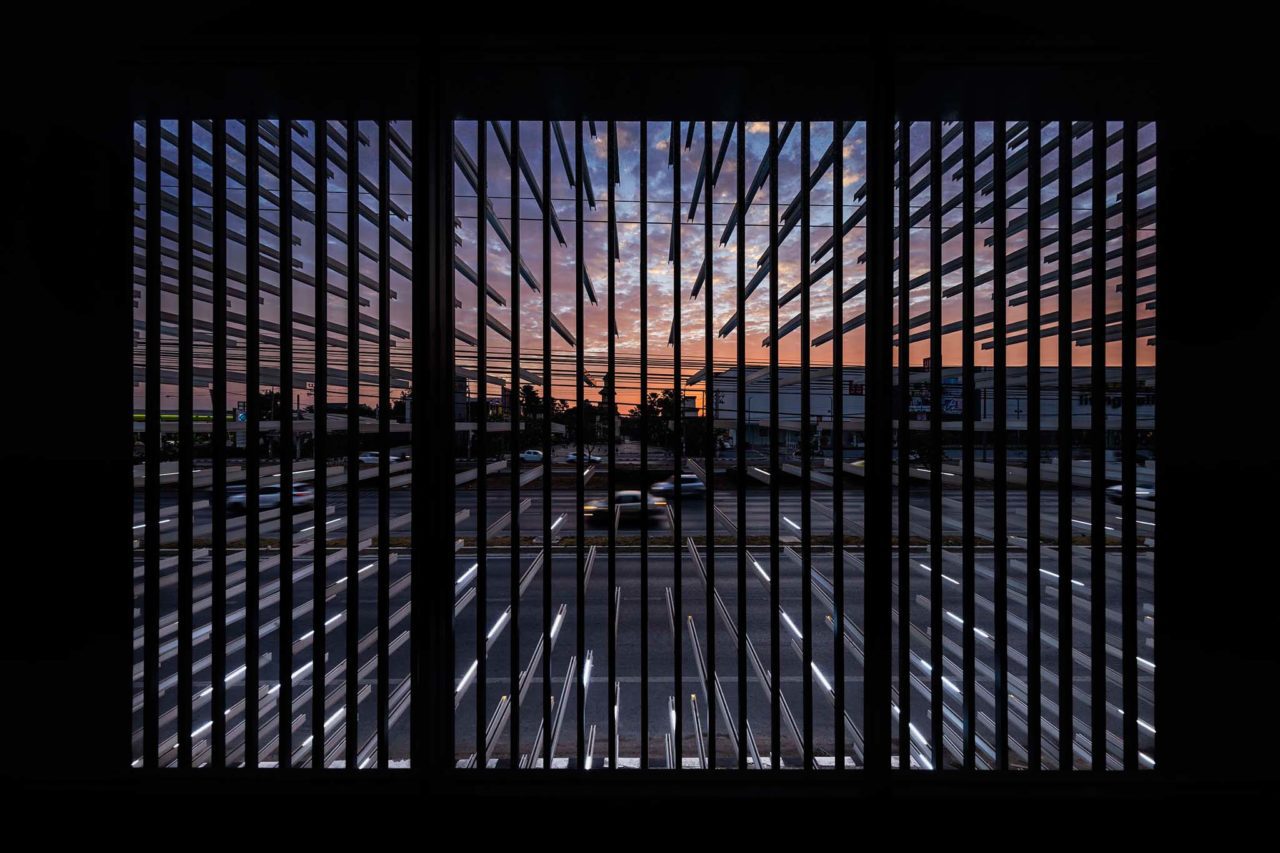
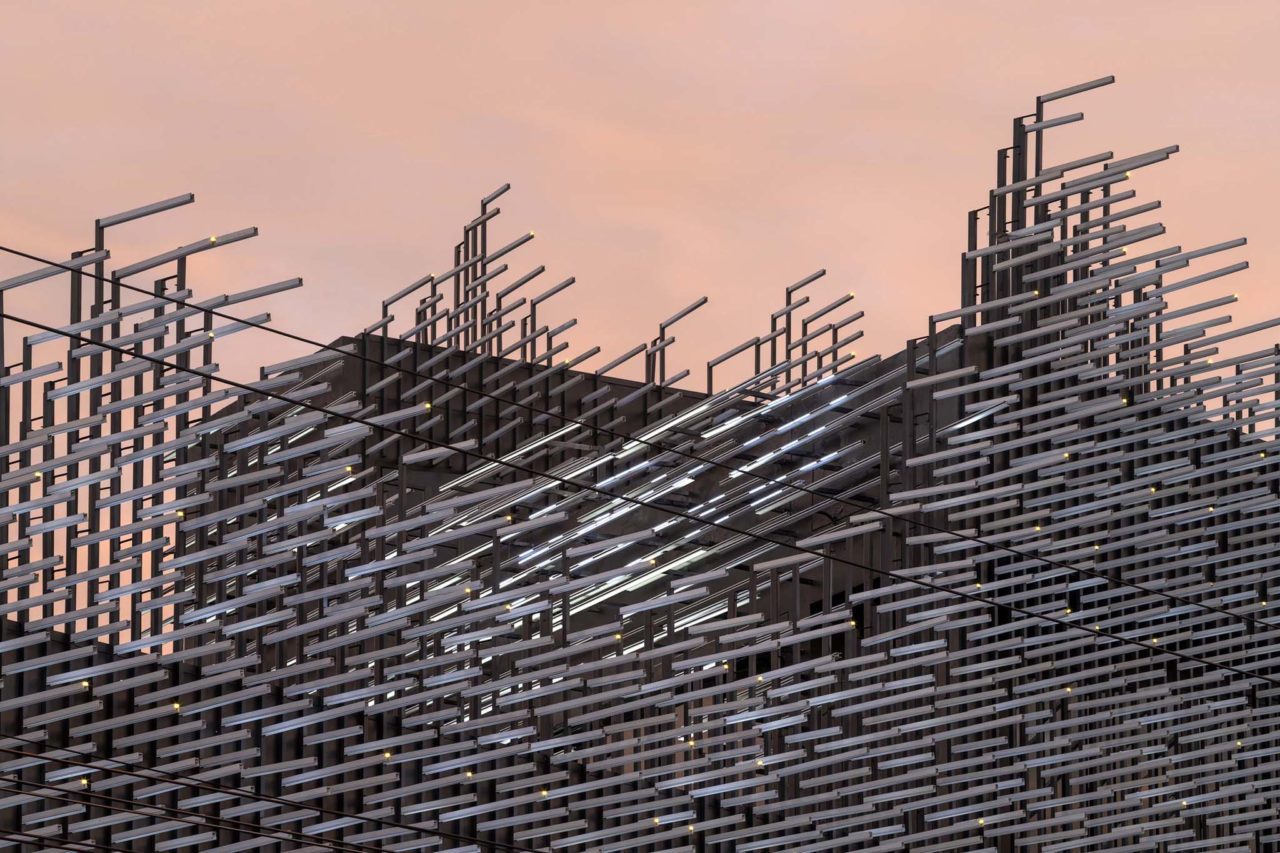

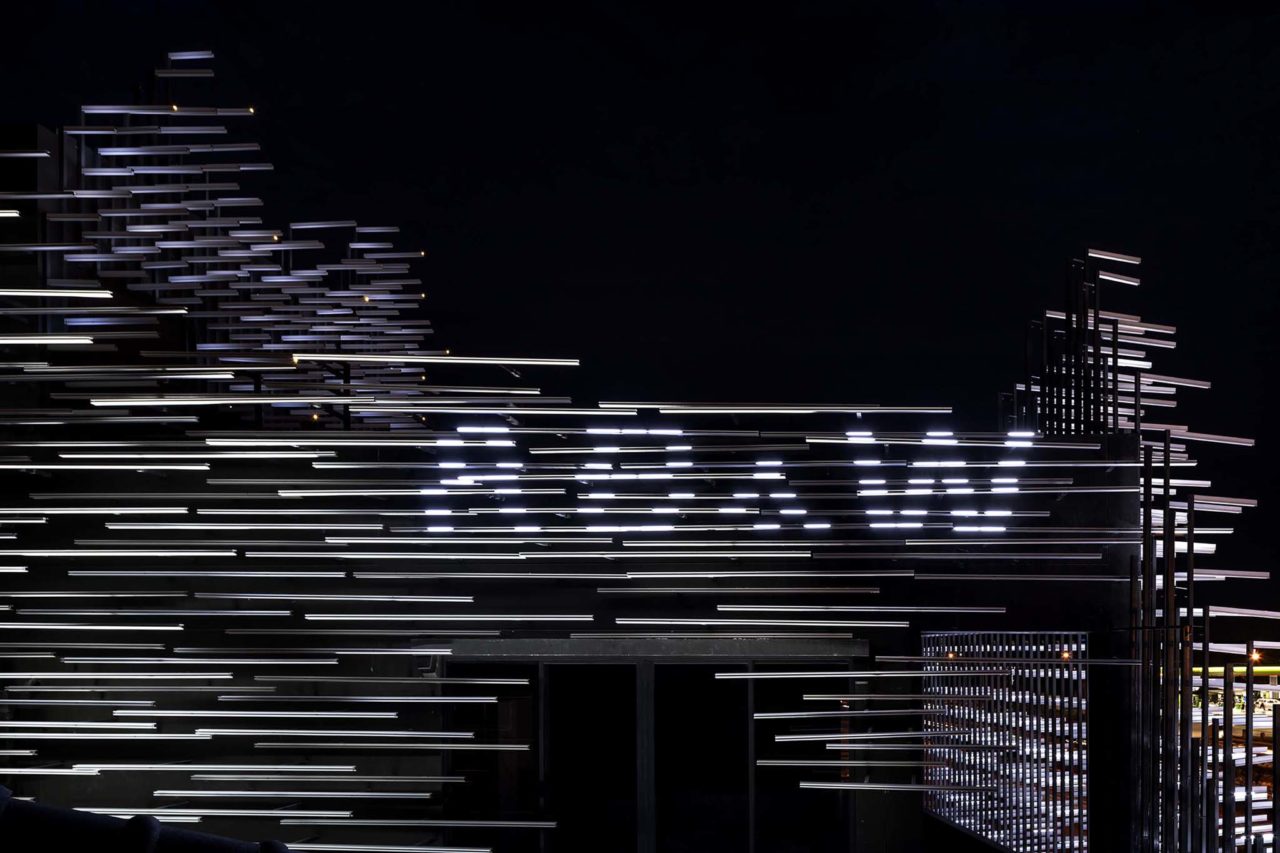
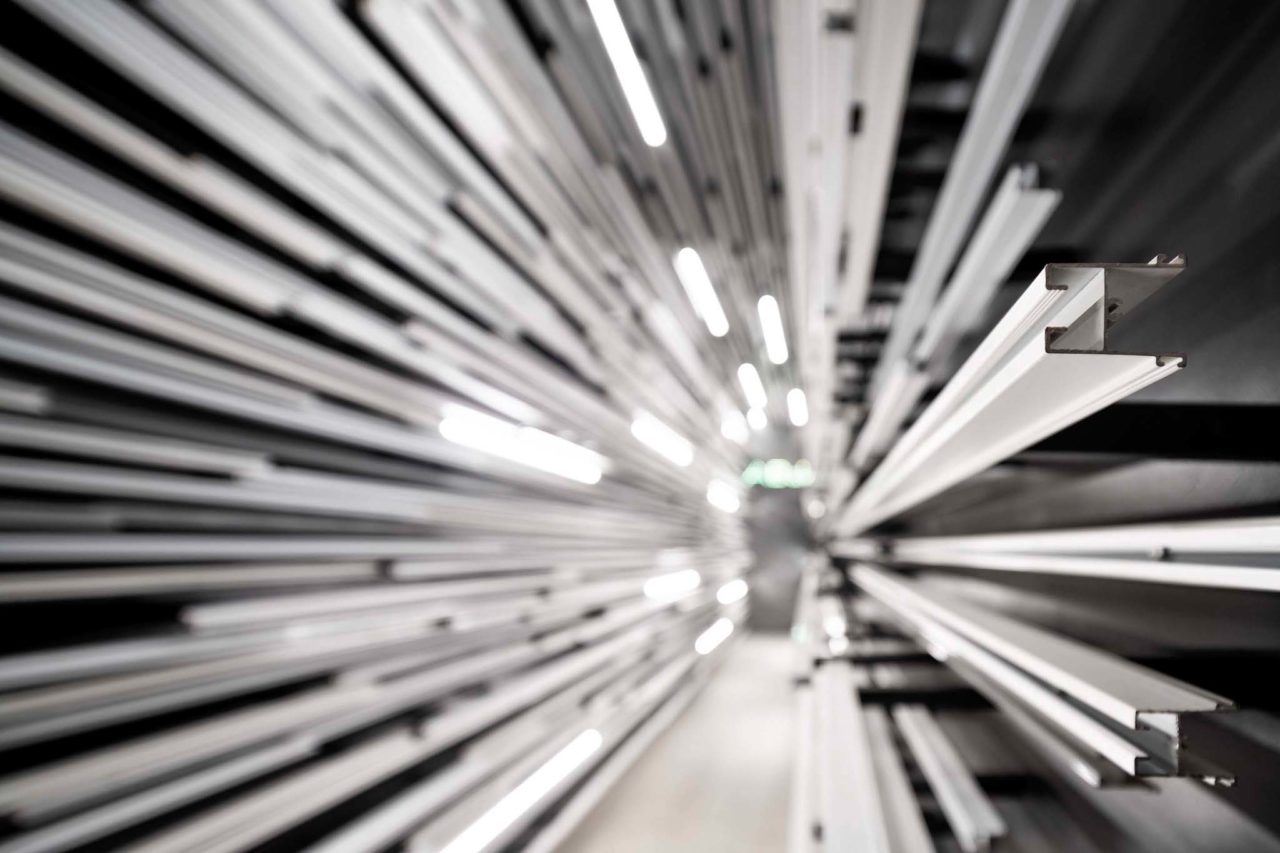
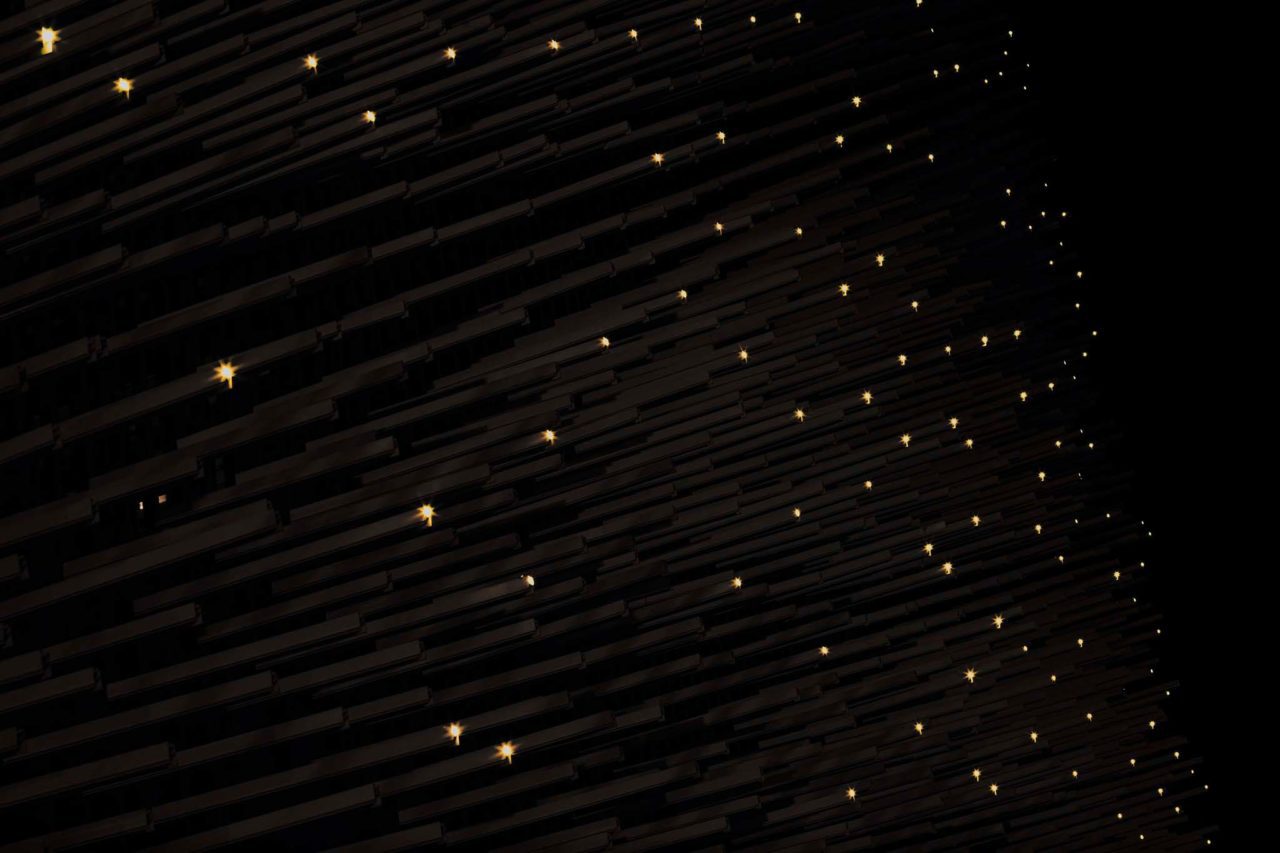
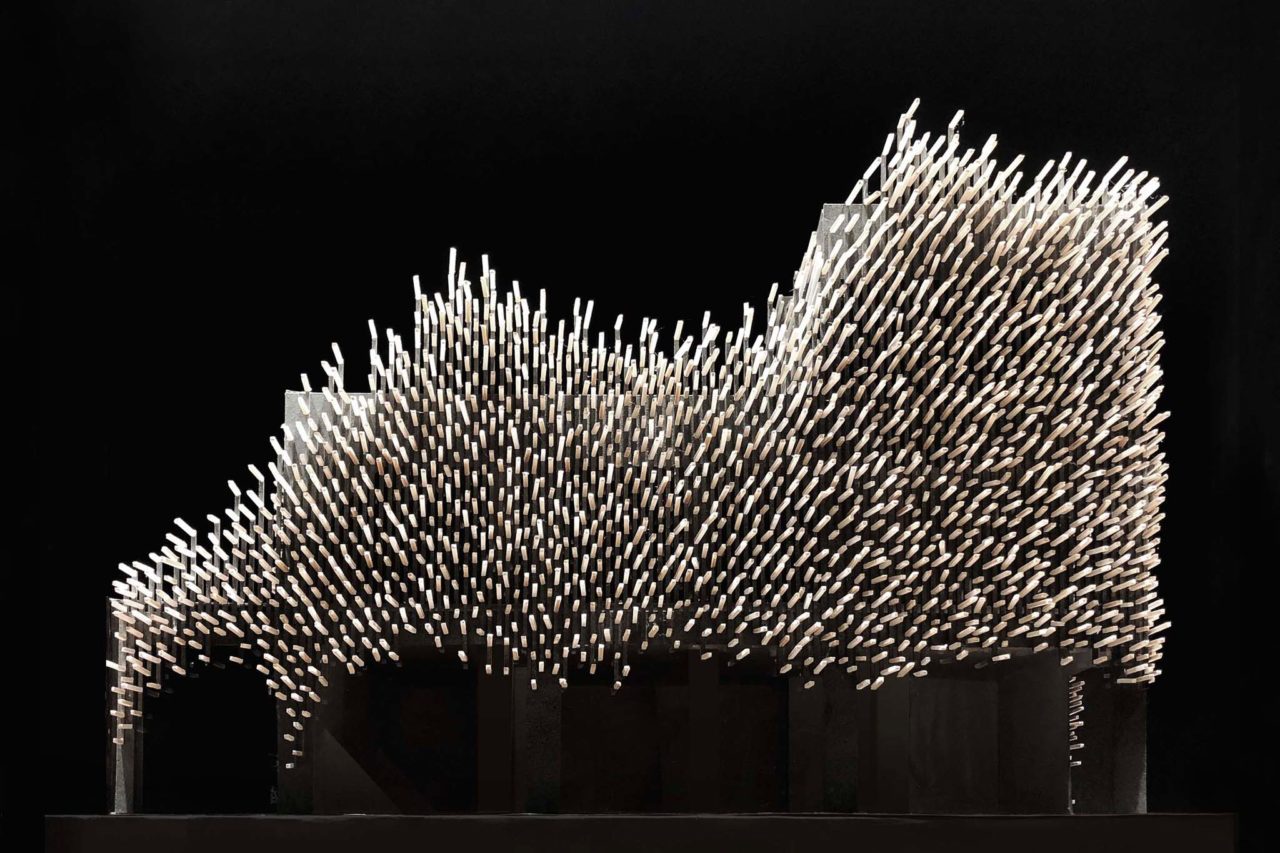
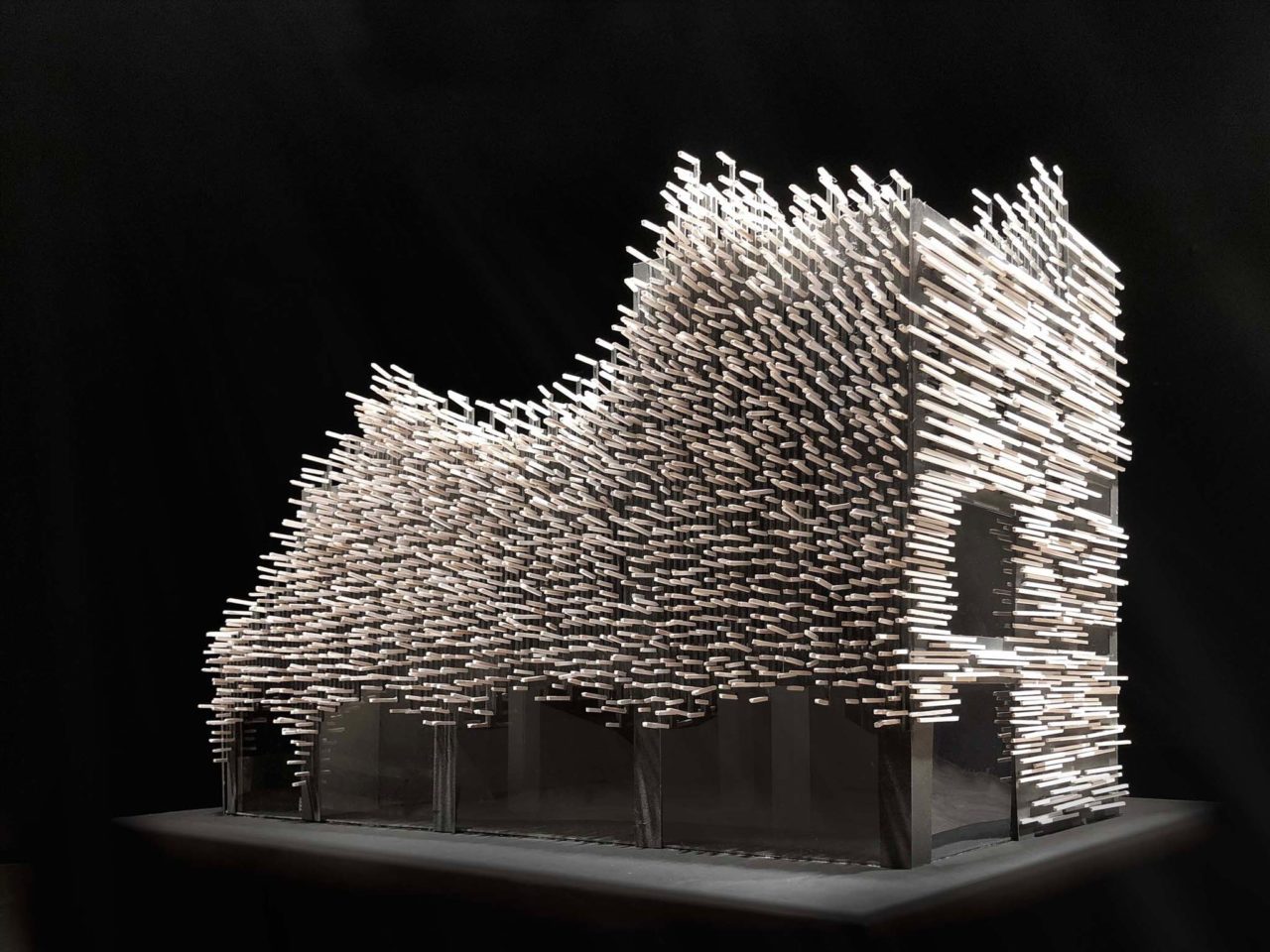

The project description is provided by the architects.
About the Architects:
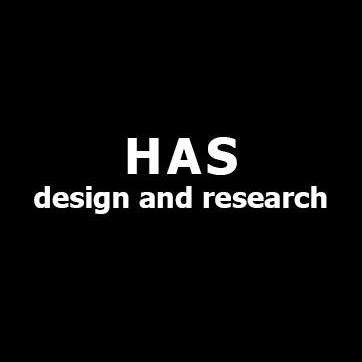
Hung And Songkittipakdee (HAS) explore Asia’s architectural language through a “design + research” parallel approach; it emphasizes the analogy of nature and man-made nature, looking for another kind of new natural architecture through the city’s own derivatives, named “The Improvised, MANufAcTURE and Chameleon Architecture”. HAS work encompasses cultural buildings, religious architecture, installation art, exhibition design, and experimental projects; and HAS research includes the train and railway markets, the charming roadside vendors, the borderless illegal constructions under the elevated freeways, and the roundabouts of dead alleys. These interesting scenes typically exist in Asian cities, where temporary construction truly reveals how people can find a “new” nature in the reinforced concrete city.
